Berlin is a city that has been shaped by its past, and nowhere is this more evident than in its museums. From ancient history to modern art, Berlin boasts an impressive array of museums that cater to all interests. But with so many options to choose from, it can be difficult to know where to start. In this post, we’ll be highlighting some of the best museum visits in Berlin, giving you a taste of the city’s rich cultural heritage and inspiring you to explore its many treasures. Whether you’re a history buff, an art lover, or simply curious about the world around you, there’s something here for everyone. So let’s dive in and discover what Berlin’s museums have to offer!
The 3 Best Museums in Berlin
- The Best Museum Island Tour and Berlin Dome Ticket
- Berlin Pergamon Museum Entrance Ticket
- Berlin Welcomecard Museum Island Pass
The 3 Best Museums in Berlin
1. The Best Museum Island Tour and Berlin Dome Ticket
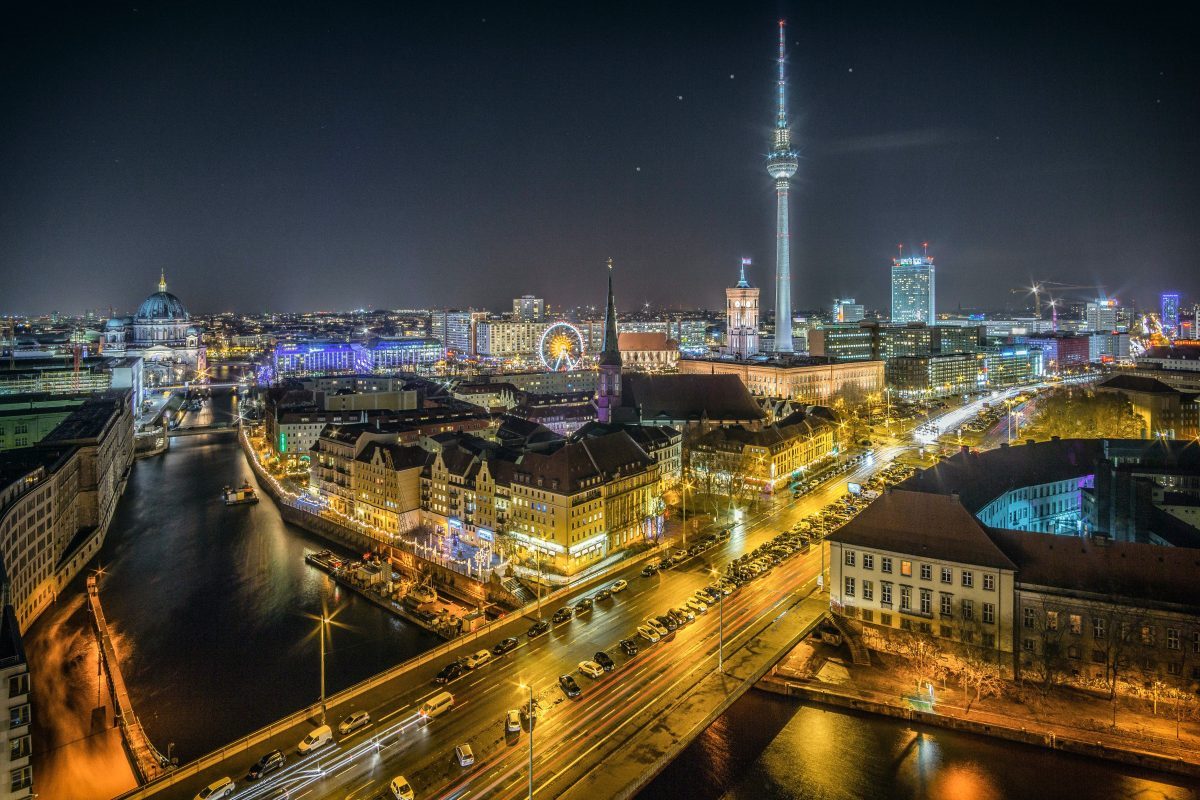
Explore the UNESCO-listed Museum Island with a private guide, who will provide you with insights about the area’s significance and show you the top sights, including hidden gems that you wouldn’t find on your own. The visit also includes entrance tickets to the Berliner Dom, also known as the Cathedral Church. This carbon-neutral tour offers personalized service and ends back at the meeting point. During the tour, you will have the opportunity to explore the Pergamonmuseum and Nikolaiviertel, the latter being a historic neighborhood known for its quaint architecture.
2. Berlin Pergamon Museum Entrance Ticket
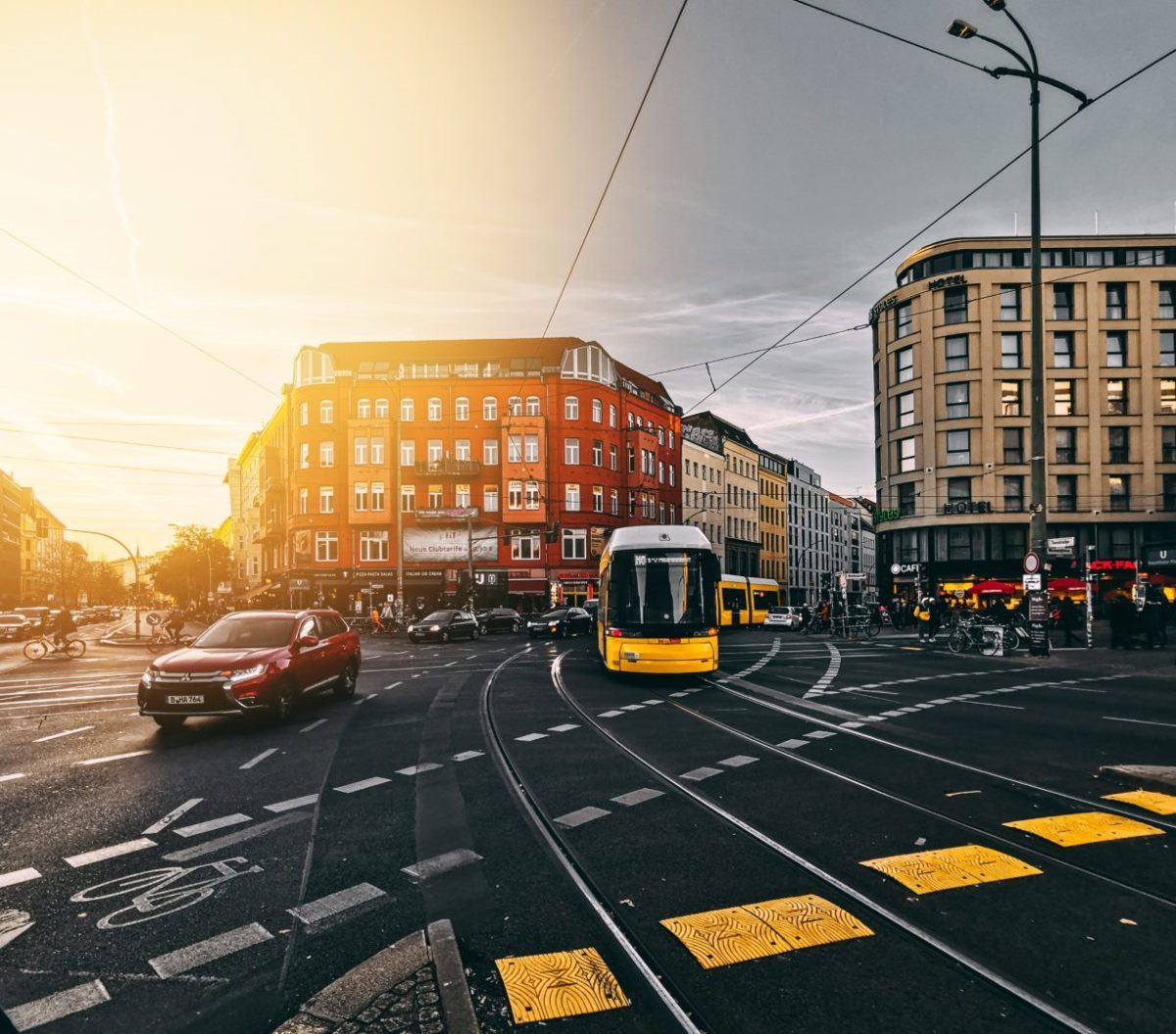
Discover the highlights of Berlin’s Museum Island with a visit to the Pergamon Museum. This world-renowned museum is home to some of the most significant Greek, Roman and Middle Eastern antiquities, including the iconic Ishtar Gate from Babylon and the Processional way. Marvel at the richly decorated façade of the Mshatta palace and explore the Middle East Museum’s vast collection of artifacts spanning over 6,000 years of cultural history from civilizations such as Mesopotamia Assyria and Ana. Delve into the wonders of Roman architecture with the Market Gate of Miletus and admire the various architectural installations of Ancient Greece and Rome. Although the ongoing redevelopment means that the hall with the Pergamon Altar is closed, you will still be able to experience most of the museum and its treasures. With so much to see and discover, the Pergamon Museum is a must-visit attraction for anyone interested in unravelling the mysteries of ancient civilizations.
3. Berlin Welcomecard Museum Island Pass
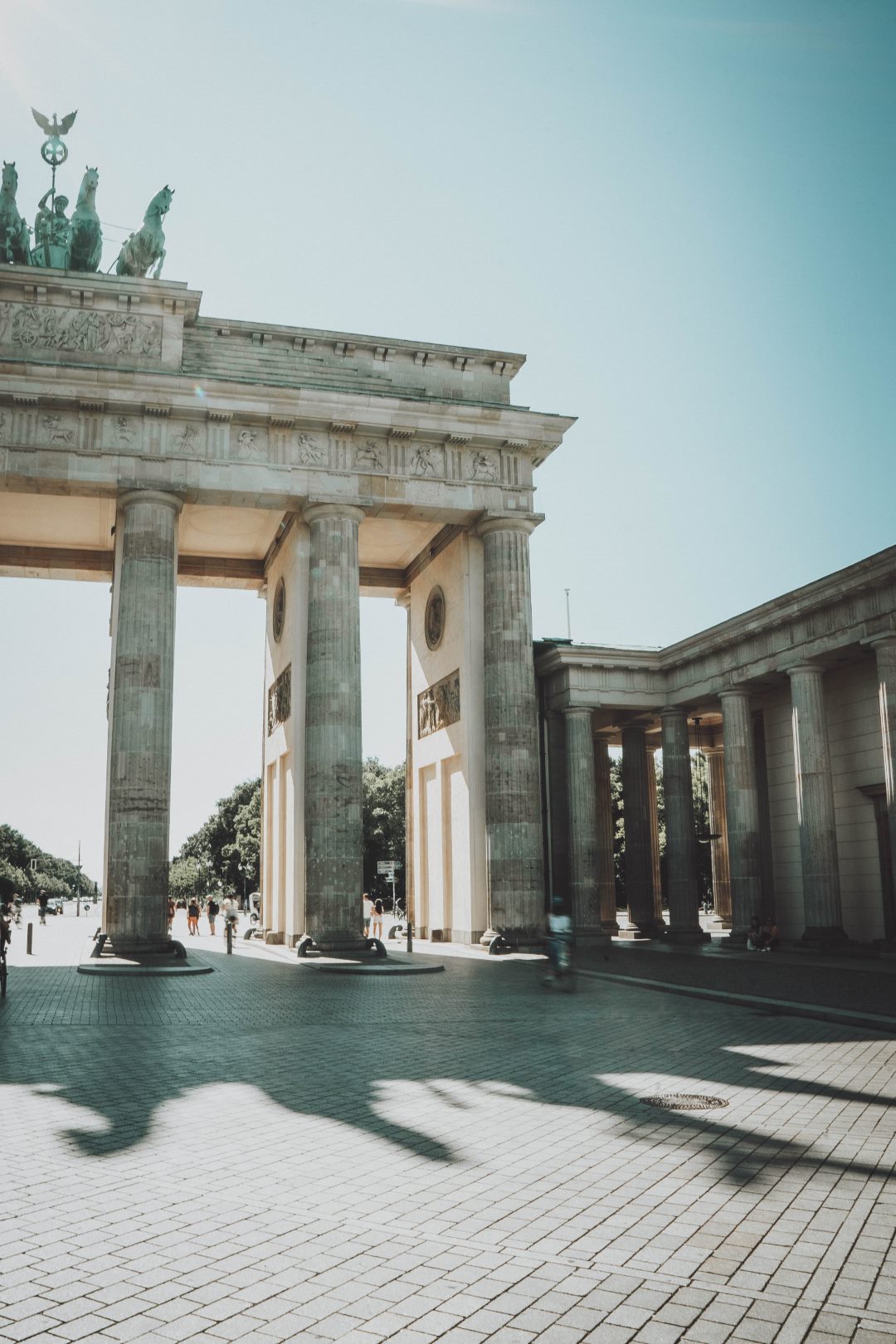
The Berlin WelcomeCard Museum Island Pass is the perfect option for those who want to explore Berlin’s most popular museums while enjoying discounts in many other tourist venues. With this pass, visitors will have free entrance to all museums in Museum Island, including the Pergamon Museum, Bode Museum, Altes Museum, Alte Nationalgalerie, and Neues Museum. Additionally, visitors will receive 72 hours of free access to the city’s public transportation system and discounts of up to 50% in attractions, restaurants, theaters, and other venues. The pass also includes a guidebook full of tour suggestions and insider tips to help visitors make the most of their stay. Museum Island is located in the heart of Berlin, on an island in the Spree River. Visitors can select the option of free transport within zones A and B (Berlin) or A, B, and C (covering Berlin and Potsdam) when choosing their Berlin WelcomeCard Museum Island pass.
Frequently Asked Questions About Berlin
Berlin is a city famous for its rich history, cultural landmarks, and stunning architecture. It attracts millions of tourists every year who come to experience the vibrant energy and unique atmosphere of the city. However, with so much to see and do, it can be overwhelming for first-time visitors to plan their trip. In this blog post, we’ll answer some of the most commonly asked questions about Berlin to help make your trip planning easier.1. What is the best time to visit Berlin?
Berlin is a year-round destination, and the best time to visit depends on your preferences. Summer months, from June to August, are the most popular among tourists, especially for those who enjoy outdoor activities and festivals. However, this is also the peak season, which means that the city can be crowded and accommodation prices can be higher than usual. Winters are cold and snowy, but it’s also the time when the city is less crowded, and you can experience Berlin’s famous Christmas markets. The shoulder season, from April to May and from September to October, is a great time to visit as the weather is milder, and there are fewer tourists around.2. What are the must-visit attractions in Berlin?
Berlin has an abundance of attractions that cater to all interests, ranging from historical landmarks to modern art galleries. Here are some of the most popular ones:Brandenburg Gate:
This 18th-century neoclassical monument is a symbol of Germany’s unity and is one of Berlin’s most recognized landmarks.Berlin Wall:
A trip to Berlin isn’t complete without visiting the iconic Berlin Wall. You can see remaining sections of the wall throughout the city, and the East Side Gallery is a popular place to visit.Museum Island:
As the name suggests, Museum Island is home to several world-renowned museums, including the Pergamon Museum, the Neues Museum, and the Alte Nationalgalerie.Reichstag:
The Reichstag is the parliament building of Germany and features stunning glass architecture. Visitors can take guided tours to learn about the building’s history and architecture.Berlin Cathedral:
The Berlin Cathedral is the largest church in Berlin and features breathtaking Renaissance and Baroque architecture.3. How do I get around Berlin?
Berlin has an extensive public transportation system that includes buses, trams, U-Bahn (underground trains), and S-Bahn (suburban trains). You can purchase tickets at machines located at the stations, or you can use the BVG app to buy tickets and plan your journey. Taxis are also readily available, but they can be more expensive than public transport.4. Is English widely spoken in Berlin?
English is widely spoken in Berlin, and most people who work in the tourism industry speak English fluently. Signs and announcements in public transportation are also in English, so getting around the city is easy. However, it’s always a good idea to learn a few basic German phrases, such as “hello” and “thank you,” as a sign of respect to the locals.5. What are the best neighborhoods to stay in Berlin?
Berlin has many neighborhoods that offer different experiences. Here are some of the most popular ones:Mitte:
Centrally located and home to many historic landmarks and museums, Mitte is a popular neighborhood for tourists.Neukölln:
A trendy and affordable neighborhood that attracts young crowds and artists.Kreuzberg:
Known for its diverse food scene and nightlife, Kreuzberg is a popular area among young people.Prenzlauer Berg:
A family-friendly neighborhood with plenty of parks, cafes, and shops.6. What should I eat in Berlin?
Berlin has a diverse food scene that reflects its multicultural population. Here are some of the must-try foods:Currywurst:
This iconic street food consists of a grilled sausage topped with ketchup and curry powder.Döner kebab:
A popular Turkish street food that consists of marinated meat, vegetables, and sauces served in a pita or wrap.Schnitzel:
A traditional German dish made with breaded and fried meat, usually pork or veal.Apfelstrudel:
A popular dessert made with thinly rolled dough and filled with sliced apples, raisins, and cinnamon.How to Spend Your Time as a Tourist in Berlin
If you’re planning a trip to Berlin, Germany’s capital, you’re in for a treat. There’s so much history, culture, and adventure to be found in this bustling city. Below, we’ve outlined some of the best ways to spend your time in Berlin, from must-see sights to hidden gems.
1. Visit the Brandenburg Gate
The Brandenburg Gate is the most iconic landmark in Berlin, so make sure it’s at the top of your list. This historic gate was built in the 18th century and served as a symbol of Prussian power. During the Cold War, the gate was located in the “death strip” between East and West Berlin and became a symbol of hope for a unified Germany.
Today, the Brandenburg Gate is a popular gathering spot for locals and tourists alike. You can take a selfie under the arch, or simply admire the impressive architecture. Pro tip: visit the gate at night, when it’s illuminated and especially beautiful.
2. Explore Museum Island
Museum Island is located in the heart of Berlin and is home to five world-renowned museums. These museums include the Pergamon Museum, the Alte Nationalgalerie, and the Bode Museum. Whether you’re interested in ancient art or modern history, there’s something for everyone on Museum Island.
Pro tip: Buy a Museum Pass Berlin ahead of time. This pass gives you access to all the museums on Museum Island, and many other museums in Berlin. It’s a great value and will save you time and money.
3. Take a Walk Along the Berlin Wall
The Berlin Wall is one of the most important and well-known symbols of the Cold War. Although much of the wall has been dismantled, there are still sections standing that you can visit. Take a walk along the East Side Gallery, which is the longest remaining section of the wall. You’ll see more than 100 murals painted by artists from around the world.
If you want to learn more about the history of the Berlin Wall, visit the Berlin Wall Memorial. This outdoor museum has a section of the wall still standing, as well as an exhibition about the history of the wall and the people who lived and died because of it.
4. Visit a Food Market
Berlin is known for its food, so make sure you try some local specialties. One of the best places to do so is at a food market. There are several food markets around the city, but some of the most popular include Street Food Thursday, Markthalle Neun, and Wochenmarkt Kollwitzplatz.
At these markets, you can find everything from traditional German sausages to international cuisine. Grab a bite to eat, listen to some music, and soak up the local atmosphere.
5. Relax in a Park
Berlin is a city that loves its parks. There are over 2,500 parks and green spaces in the city, so you’re never far away from a place to relax. Some of the most popular parks include Tiergarten, Tempelhofer Feld, and Mauerpark.
In the summer months, these parks come alive with picnics, concerts, and outdoor markets. Grab a cold drink from a nearby vendor and settle in for a few hours of people-watching.
6. Shop at a Flea Market
For a different kind of shopping experience, head to one of Berlin’s many flea markets. The most famous flea market is probably the one at Mauerpark, which takes place every Sunday. Here, you can find everything from vintage clothing to handmade crafts.
If you’re looking for something a bit smaller, try the Nowkoelln Flowmarkt or the Arkonaplatz Flea Market. These markets are a bit less crowded than Mauerpark, but still offer a great selection of treasures.
7. See a Show at the Berliner Philharmoniker
The Berliner Philharmoniker is one of the world’s best orchestras and performs in the stunning Philharmonie concert hall. Even if you’re not a classical music buff, seeing a show here is an unforgettable experience. The acoustics are unparalleled, and the atmosphere is electric.
Pro-tip: If you’re under 28 or a student, you can purchase €10 tickets for many performances through the orchestra’s “Young Euro Classic” program.
Conclusion
Berlin is a vibrant and exciting city, with something to offer every kind of traveler. From history to culture to food and music, you won’t run out of things to see and do. Use this guide to plan your stay, and make the most of your time in one of Europe’s most fascinating cities.
Berlin is a city renowned for its rich history, vibrant culture and abundance of art. With so much to offer, it can be challenging to decide which museums to visit. Luckily, we’ve compiled a list of the best museum visits in Berlin to help you make the most of your time in this incredible city. From world-class art collections to fascinating exhibitions on the city’s tumultuous past, Berlin’s museums offer something for everyone. So, whether you’re a history buff, an art aficionado or just looking for an interesting way to spend an afternoon, let us guide you through the top museum visits in Berlin.
The 3 Best Museums in Berlin
- The Best Museum Island Tour and Berlin Dome Ticket
- Berlin Pergamon Museum Entrance Ticket
- Berlin Welcomecard Museum Island Pass
The 3 Best Museums in Berlin
1. The Best Museum Island Tour and Berlin Dome Ticket

Explore the Museum Island in Berlin with a private guide who will take you to see the top sights and hidden gems. You’ll learn about the history and significance of this UNESCO-listed area and visit Berliner Dom, the Cathedral Church. Entrance tickets are included so you can fully enjoy this tour. This private tour ensures personalized service and is carbon neutral. The meeting point is Am Köllnischen Park 5, and the tour ends at the same place. Don’t miss out on this opportunity to experience the best of Berlin’s Museum Island.
2. Berlin Pergamon Museum Entrance Ticket
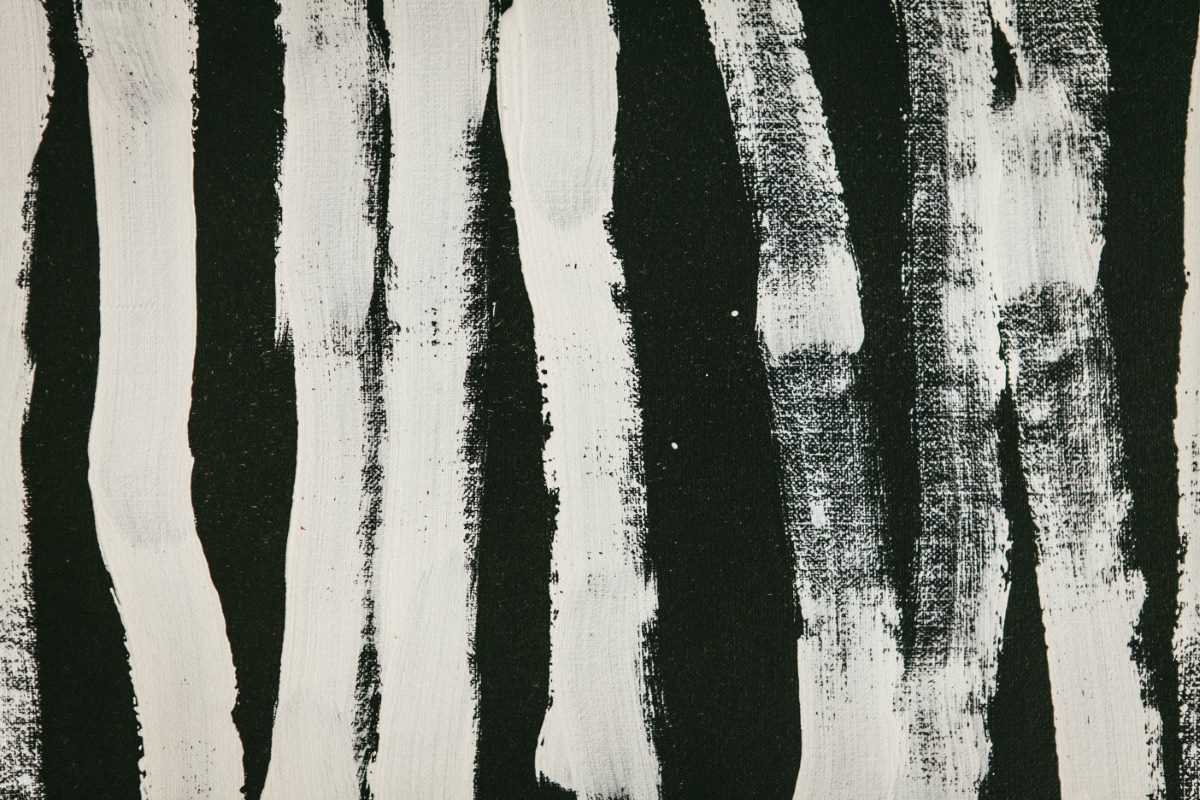
The Pergamon Museum in Berlin is a must-visit for art and history enthusiasts. With this entrance ticket, you’ll have access to the most famous part of the Berlin Museum Island and get a chance to see some of the main attractions such as the colorful Ishtar Gate and Processional way from Babylon. You’ll also gaze at the richly decorated stone façade of the Mshatta palace.
While the redevelopment of the museum is still ongoing, you’ll be able to enjoy most of the collections. One of the world’s most significant collections of Greek and Roman art, the Pergamon antique collection, is a highlight of the museum. You’ll get to see the architectural installations from Ancient Greece and Rome, including the gem of Roman architecture: the Market Gate of Miletus from circa 100 AD. However, note that the hall with the Pergamon Altar will remain closed until at least 2024 due to the ongoing renovation.
Additionally, the Middle East Museum is also worth exploring as it collects artifacts from 6000 years of civilization, including Mesopotamia, Assyria, and Ana. If you’re interested in history and art, this museum visit is a perfect choice for your trip to Berlin.
3. Berlin Welcomecard Museum Island Pass

The Berlin WelcomeCard Museum Island Pass offers several benefits to discover Berlin’s main attractions. You can get discounts of up to 50% on various tourist venues, including theaters, restaurants, and sightseeing tours. With the Museum Island Pass, you can access five selected museums in the Spree River island, including the Pergamon Museum, Bode Museum, Altes Museum, Alte Nationalgalerie, and Neues Museum. Plus, you can get free entry to all museums situated within Berlin’s Museum Island premises. A complimentary guidebook containing useful information and insider tips is also provided. You’ll have the option to choose free public transport within zone A and B or A, B, and C within Berlin and Potsdam. Make the most of your stay in Berlin and take advantage of the Berlin WelcomeCard Museum Island Pass.
10 Frequently Asked Questions by Tourists Visiting Berlin
Berlin, the capital city of Germany, is one of Europe’s most vibrant and historically significant cities. This city is famous for its rich history, museums, nightlife, and vibrant culture. It’s no wonder that millions of tourists from all over the world visit this city every year. Here are the top ten frequently asked questions by tourists visiting Berlin.1. What’s the best way to get around Berlin?
Berlin is known for its excellent public transportation systems. You can either use the U-Bahn (underground metro), S-Bahn (overhead metro), buses, or trams. These public transportation systems are reliable, fast, and come with affordable prices. Moreover, there are designated bike lanes and bike-sharing services in the city, making it an ideal place for cyclists.2. What are the must-see attractions in Berlin?
Berlin is a city steeped in rich history, meaning it has a plethora of attractions worth visiting. The must-see attractions are The Brandenburg Gate, Berlin Wall, Reichstag Building, Checkpoint Charlie, Holocaust Memorial, Pergamon Museum, and Berlin Zoo. There are also many free walking tours that tourists could take advantage of to visit these and other exciting locations.3. What time do the shops open in Berlin?
Most shops in Berlin are open from Monday to Saturday, between 10 am and 8 pm. Many shops and supermarkets are also open on Sundays and public holidays, which is quite convenient for tourists.4. What’s the nightlife like in Berlin?
The nightlife in Berlin is legendary. Berlin is well-known for its techno music clubs, which are popular among both locals and tourists. Some of the most famous clubs include Berghain, Watergate, and Tresor. The city also hosts a lot of bars, pubs, and nightclubs, making it an ideal place for party lovers.5. What’s the best time to visit Berlin?
The best time to visit Berlin is from May to September. During this period, the weather is mild, and outdoor activities are in full swing. The city also hosts several high profile events, including the Berlin International Film Festival, which takes place in February.6. What’s the currency used in Berlin?
The official currency used in Berlin and the rest of Germany is the Euro. It’s advisable to carry some cash in Euros, especially for small daily purchases. However, most shops, restaurants, and tourist attractions accept credit and debit cards.7. What’s the food like in Berlin?
Berlin’s cuisine is incredibly diverse because of its multicultural population. The city offers an array of culinary delights, ranging from traditional German foods like currywurst, schnitzels, and sauerbraten to foods that reflect the cultural identity of its immigrant communities. The street food scene in Berlin is also booming, with numerous food trucks and vendors offering delicious food options.8. What’s the weather like in Berlin?
Berlin has a continental climate, meaning it experiences extremes of heat and cold. Winters can be very cold, with temperatures often below freezing, while summers are warm and humid. The best time to visit Berlin is therefore during the summer months when the weather is ideal for outdoor activities.9. What should I know about Berlin’s history?
Berlin’s history is rich and very complex. It has had a turbulent history, from the rise of Hitler and the Nazis in the 1930s to the Berlin Wall and subsequent reunification. Tourists should visit the many historical sites like the Berlin Wall, the Reichstag Building, the Holocaust Memorial, and Checkpoint Charlie, to understand the city’s historical background.10. What’s the culture like in Berlin?
Berlin’s culture is diverse, vibrant, and rapidly evolving. It’s a hub for artists, creatives, and bohemians, which gives the city a unique and authentic atmosphere. Tourists should take some time to explore the many alternative areas like Kreuzberg, Prenzlauer Berg, and Neukölln, which are full of independent shops, cafes, galleries, and street art.How to Spend Your Time as a Tourist in Berlin
Are you planning a trip to Berlin? This vibrant city has so much to offer, from historical landmarks to vibrant nightlife. Whether you have a few days or a week to explore, here is a guide on how to spend your time as a tourist in Berlin.Day 1 – History and Culture
Start your trip with a visit to the iconic Brandenburg Gate. This 18th-century monument is the symbol of the city and often the focal point of major events. Take a walk along the Unter den Linden Boulevard to reach Museum Island, home to five internationally significant museums that showcase art and artifacts from ancient civilizations. The Pergamon Museum, housing a reconstruction of the Pergamon Altar and statuary from ancient Greece, is a must-see.
In the evening, catch a performance at the Berliner Philharmonie or take a walk along the historic Berlin Wall at the East Side Gallery. This open-air gallery features over a hundred murals painted by artists from around the world.
Day 2 – Food and Drink
Start your day with a visit to the bustling Hackescher Market. This market features a variety of vendors selling everything from fresh produce to handmade gifts. Afterward, take a food tour and sample Berlin’s famous street food like currywurst or doner kebab.In the evening, explore the city’s vibrant nightlife scene. Head to Kreuzberg or Friedrichshain to experience lively pubs and beer gardens. You may also want to take part in a local tradition and enjoy a Berliner Weisse, a sour beer, served with a shot of raspberry or woodruff syrup.
Day 3 – Outdoor Activities
Start your day with a visit to Tiergarten, the city’s largest park. With over 200 acres of green space, it’s the perfect place to go for a run, have a picnic, or rent a bike and explore the park’s many trails.If you’re looking for something more adventurous, take a hot air balloon ride over the city, or book a kayaking tour on the River Spree. Alternatively, take a day trip to nearby Potsdam to explore the beautiful Sanssouci Palace and Gardens.
Day 4 – Shopping
No trip to Berlin would be complete without a shopping excursion. Start your day at Kurfürstendamm, the city’s premier shopping district. Here, you’ll find high-end boutiques, as well as popular stores like H&M and Zara.If you’re looking for something more eclectic, head to the trendy neighborhood of Neukölln. This neighborhood is home to a variety of boutiques and specialty stores, as well as a weekly street market with unique crafts and handmade goods.
Day 5 – Museums
Take a day to explore some of Berlin’s lesser-known museums. The Jewish Museum Berlin is a must-see, with exhibitions on the history of the Jewish community in Germany. Alternatively, head to the Stasi Museum to learn about the activities of the East German secret police during the Cold War.In the evening, take a stroll through the trendy neighborhood of Kreuzberg. Here, you’ll find a variety of restaurants and bars, as well as an eclectic art and music scene.
Final Thoughts
With its rich history, vibrant nightlife, and world-class museums and galleries, Berlin has something to offer every tourist. Whether you’re interested in history, culture, or outdoor activities, there is no shortage of things to do in this dynamic city.Use this guide to plan your trip and make the most of your time in Berlin. With a little bit of planning, you’ll be sure to have an unforgettable experience.
Berlin is a city rich in history and culture, with an abundance of museums that offer a glimpse into its past and present. From museums dedicated to art and architecture, to those exploring the city’s darker history, Berlin has something for everyone. Whether you are a first-time visitor or a seasoned traveler, the city’s museums are a must-see. In this post, we have compiled a list of the best museum visits in Berlin, to help you narrow down your choices and make the most of your time in this vibrant city.
The 5 Best Museums in Berlin
- Best Museum Island Away The
- Pub Crawl Skiptheline Club Entry
- Pergamon New Museum Tour Museum
- Welcomecard Museum Island Public Transport
- Skiptheline Pergamon Museum Museum Island
The 5 Best Museums in Berlin
1. Best Museum Island Away The

Explore Berlin’s Museum Island on a private tour that includes a visit to the famous Berliner Dom. Your private guide will point out the architectural details of this UNESCO World Heritage Site while sharing stories of Berlin’s past. You’ll also see hidden gems not visible to the untrained eye. With your ticket included, you’ll skip the long lines to enter Berliner Dom, known locally as the Cathedral Church. This private tour offers personalized service and carbon-neutral transportation, making it a sustainable and enjoyable way to explore Berlin. Your meeting point is at Am Köllnischen Park 5, in front of the entrance to the Märkisches Museum. The tour ends at the same location. Confirmations will be sent upon booking, and please note that this tour is not wheelchair accessible. However, service animals are allowed. Don’t miss out on visiting one of Berlin’s most significant areas with a private guide who will make your time in Museum Island unforgettable.
2. Pub Crawl Skiptheline Club Entry
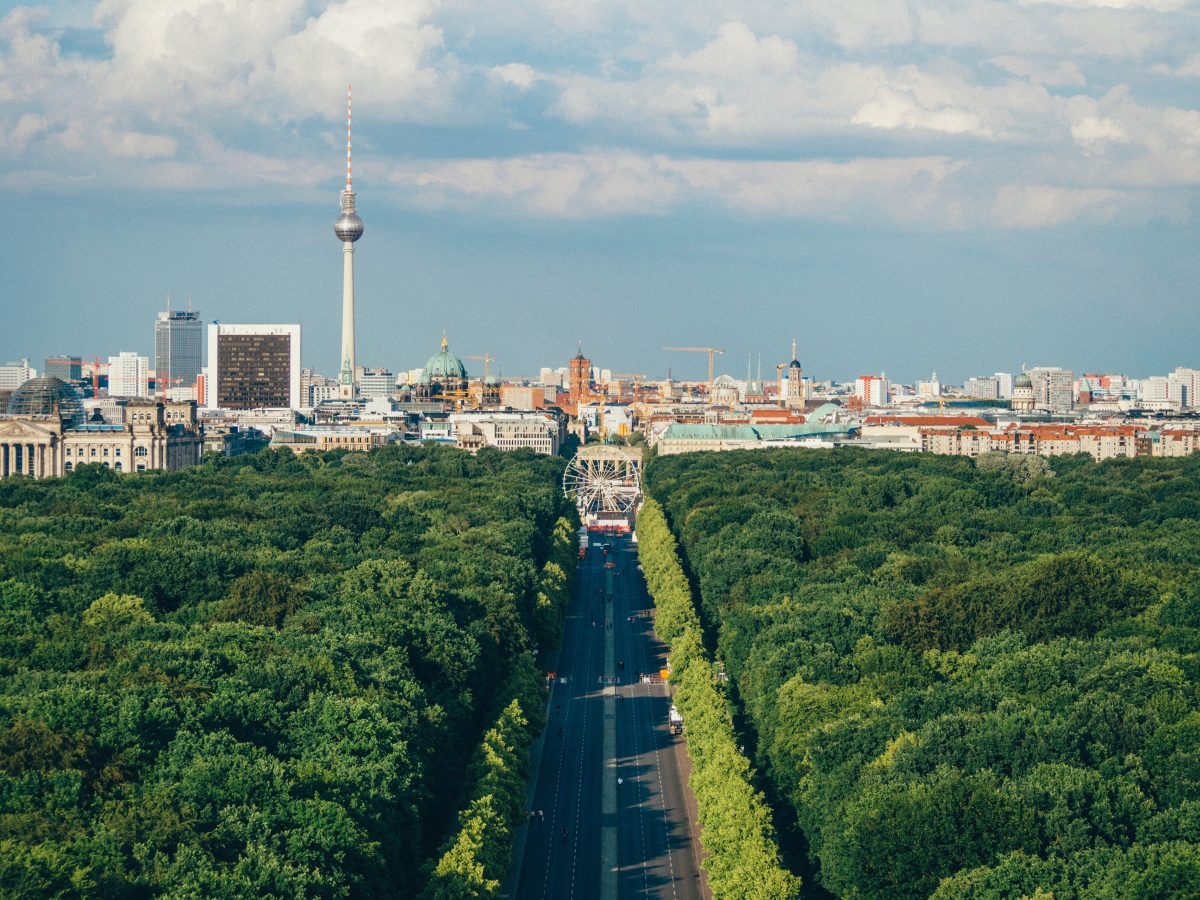
Begin your evening by experiencing Berlin’s famous nightlife scene with a local guide on this pub crawl tour. Skip the line with VIP entrance to the club and visit 4 different venues, including pubs, bars, dance halls, and the popular club. Get to know your guide and fellow travelers as you make four stops and enjoy complimentary shots and drink specials (subject to the venue). This tour also includes a train ticket. Please note that this tour is not suitable for pregnant women, wheelchair users, or children under 18 years.
3. Pergamon New Museum Tour Museum
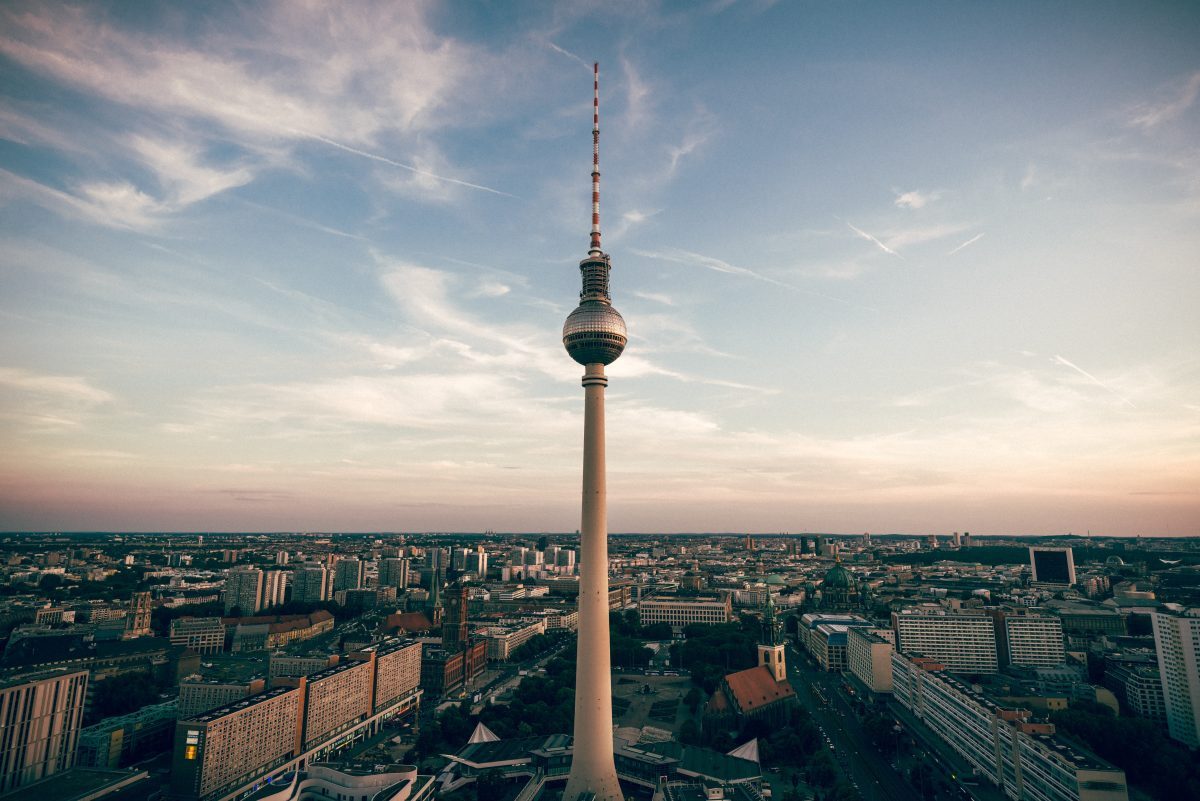
Explore the Pergamon and New Museum in Berlin with a skip the line guided tour led by an expert guide. Admire the impressive artifacts and architectural structures on display, such as the bust of Nefertiti, Market Gate of Miletus, Ishtar Gate, Byzantine boy, and more. Learn about the history behind these collections and gain a critical understanding of their relationship to Berlin’s past and present. After the tour, continue your exploration of Museum Island by visiting the Bode Museum, Alte Nationalgalerie, and Altes Museum. Gain a deeper appreciation for the Mesopotamian, Assyrian, Babylonian, Greek, and Egyptian cultures on this comprehensive museum tour.
4. Welcomecard Museum Island Public Transport
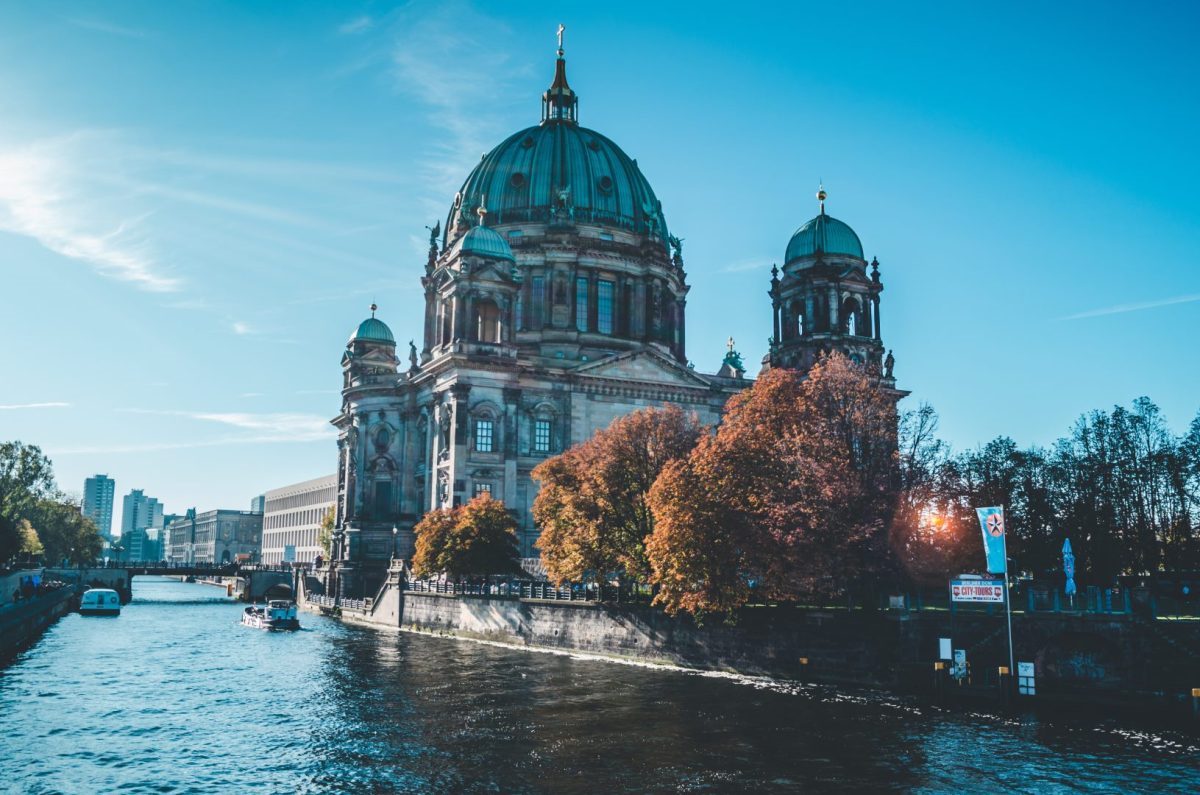
The Berlin WelcomeCard Museum Island is the perfect opportunity for visitors to explore Berlin’s Museum Island with ease and affordability. This card offers 72 hours of free access to the city’s public transport system, allowing you to comfortably navigate through Berlin’s many cultural sites. In addition to free transport, the card enables you to take advantage of discounts at many of the city’s tourist attractions, including theaters, restaurants, and more. The card grants free entrance to all of the museums on Berlin’s Museum Island, including the Pergamon Museum, Bode Museum, Altes Museum, Alte Nationalgalerie, and Neues Museum – so you can immerse yourself in the cultural wonders of Berlin. A complimentary guidebook is also included, which provides useful insider tips and tour suggestions to make the most of your stay in Berlin. With the Berlin WelcomeCard Museum Island, you can enjoy the best of Berlin’s cultural scene without breaking the bank!
5. Skiptheline Pergamon Museum Museum Island
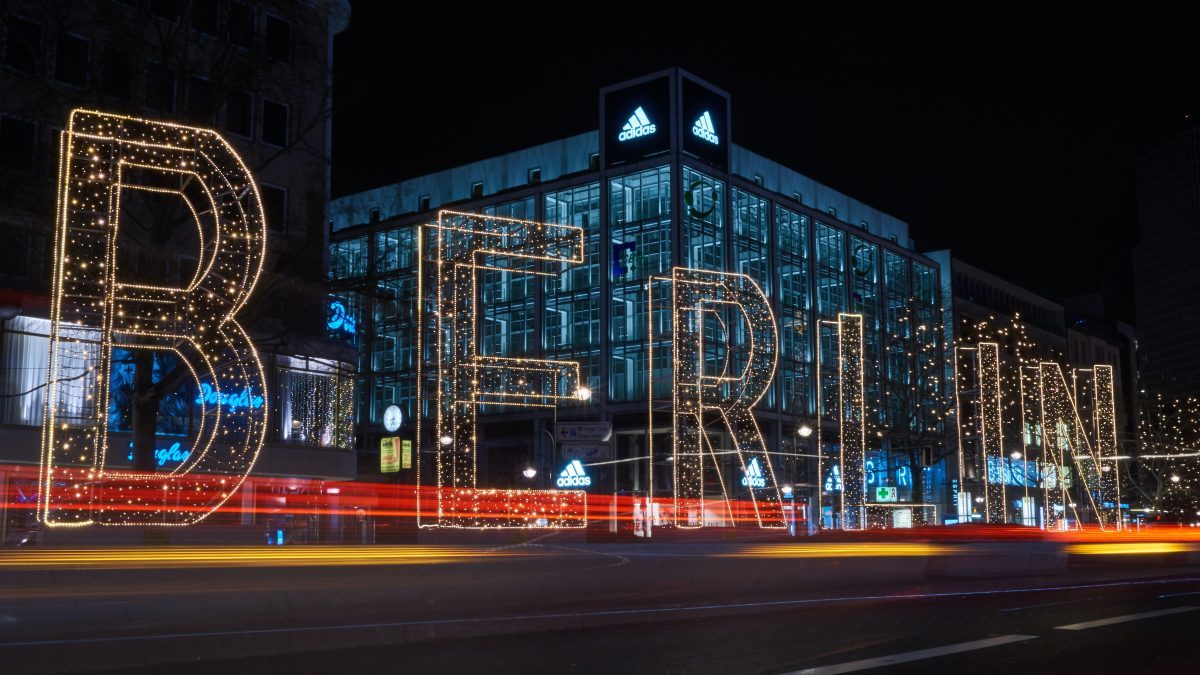
Enjoy a fascinating visit to the Pergamon Museum at Museum Island in Berlin with skip-the-line admission tickets. With an expert guide, explore a wide array of ancient artwork and learn about Classical Antiques Ancient Near East and Islamic Art. Opt for extended tour options to visit other museums in the area, including the Berlin Cathedral. The standard option includes a guided tour of the Pergamon Museum where you will see ancient architecture, German post-antiquity art, Middle Eastern and Islamic art all under one roof. This tour includes skip-the-line tickets to both the Pergamon Museum and Berlin Cathedral (for the 4 and 5-hour options), as well as a licensed guide. Convenient pickup is also available from your accommodation in Berlin making for a hassle-free outing. Overall, this tour promises an in-depth exploration of some the most intriguing artwork, architecture, and history in Berlin.
Frequently Asked Questions About Berlin
Berlin is a world-class destination that is known for its rich history, thriving arts and culture scene, and unique diversity. The city attracts millions of visitors each year from all corners of the globe.Here are some of the most frequently asked questions about Berlin, along with helpful answers to ensure that you make the most of your visit.1. How do I travel around Berlin?
The public transportation system in Berlin is one of the best in the world, with an extensive network of buses, trams, and trains. The subway system (U-Bahn) is the fastest way to get around the city, while the buses and trams are great for exploring the many different neighborhoods.To use the public transport, you will need to purchase a ticket from one of the many ticket machines located throughout the city. Single tickets, day tickets, and weekly tickets are all available at reasonable prices.2. What is the best time of year to visit Berlin?
Berlin is a year-round destination, with each season offering a unique experience. The city can get quite cold in the winter, but this is also when you can experience the magical Christmas markets and snow-covered landscape. Spring and fall are mild and pleasant, while the summer months can get quite hot, making it ideal for outdoor activities and exploring the many parks and lakes.3. What are some must-see attractions in Berlin?
There are countless things to see and do in Berlin, but some of the most popular attractions include the Berlin Wall, the Brandenburg Gate, the Reichstag Building, Checkpoint Charlie, Museum Island, and the Berlin Zoo.4. What are some lesser-known attractions in Berlin?
In addition to the well-known landmarks, Berlin is full of hidden gems that are waiting to be discovered. For example, you can visit the abandoned Tempelhof Airport, which has been converted into a massive public park, or explore the colorful street art in the neighborhood of Kreuzberg. Other lesser-known attractions include the Berliner Unterwelten, an underground maze of tunnels and bunkers, and the Prinzessinnengärten, an urban oasis that offers a taste of sustainable city living.5. What is the food like in Berlin?
Berlin is a melting pot of different cultures, and this is reflected in its cuisine. Some traditional Berlin dishes include currywurst, a type of sausage that is served with curry ketchup, and schnitzel, a dish made from thinly sliced meat that is usually served with potatoes and vegetables. There are also countless international restaurants, catering to all tastes and preferences.6. What is the nightlife like in Berlin?
Berlin is renowned for its vibrant nightlife, with countless bars, clubs, and music venues to choose from. The city has a reputation for being a party destination, with many venues open until the early hours of the morning. Some of the most popular areas for nightlife include Kreuzberg, Neukölln, and Friedrichshain.7. What are some safety tips for visiting Berlin?
Berlin is generally a safe city, but as with any major destination, it is important to take certain precautions. Some tips for staying safe in Berlin include:- Keep an eye on your belongings, especially in crowded areas– Stick to well-lit and busy streets at night
– Avoid drinking too much alcohol or taking drugs
– Be aware of scams and pickpockets
8. What is the shopping like in Berlin?
Berlin is a great destination for shopping, with plenty of boutiques, department stores, and flea markets to choose from. Some of the most popular shopping areas include Kurfürstendamm, Friedrichstrasse, and Prenzlauer Berg. There are also plenty of vintage shops and second-hand stores, where you can find unique and one-of-a-kind pieces.9. What are the best day trips from Berlin?
If you have time to explore beyond the city limits, there are plenty of great day trips you can take from Berlin. Some popular options include:- Potsdam, which is home to the famous Sanssouci Palace– Dresden, a beautiful city that is known for its stunning architecture
– Wannsee, a picturesque lake that is popular for swimming and boating
– Spreewald, a beautiful natural reserve that is known for its network of canals and waterways
10. What is the currency used in Berlin?
The currency used in Berlin (and throughout Germany) is the Euro. Most shops and restaurants will accept credit cards, but it is always a good idea to have some cash on hand for smaller purchases and for using public transportation.Conclusion
Berlin is a truly unique and fascinating city that is full of surprises. Whether you are interested in history, art, culture, food, or nightlife, there is something for everyone to enjoy. By following these helpful tips and recommendations, you can make the most of your visit and create memories that will last a lifetime.Berlin is a city full of rich history and culture, and what better way to immerse yourself in it than by visiting its world-renowned museums? From contemporary art to ancient artifacts, Berlin’s museums have it all. But with so many to choose from, where do you start? In this post, we’ll take a look at the best museum visits in Berlin, highlighting the must-see exhibits and collections that are sure to make your trip an unforgettable one. So, let’s get started on exploring the fascinating world of museums in Berlin!
The 5 Best Museums in Berlin
- Pub Crawl Skiptheline Club Entry
- Pergamon New Museum Tour Museum
- Welcomecard Museum Island Public Transport
- Skiptheline Pergamon Museum Museum Island
- Pergamon Museum Entrance Ticket
The 5 Best Museums in Berlin
1. Pub Crawl Skiptheline Club Entry

Begin your evening and discover Berlin’s famous nightlife scene with a local guide on this tour. Skip the line with VIP entrance to the club and visit five different stops, including four bars/pubs/dance halls and one popular club. Complimentary shots and drink specials (subject to the venue) are included in the tour. Please note that this tour is not suitable for pregnant women, wheelchair users, or children under 18 years. A train ticket is also included in the tour. Join us for a night of exploring Berlin’s vibrant nightlife!
2. Pergamon New Museum Tour Museum
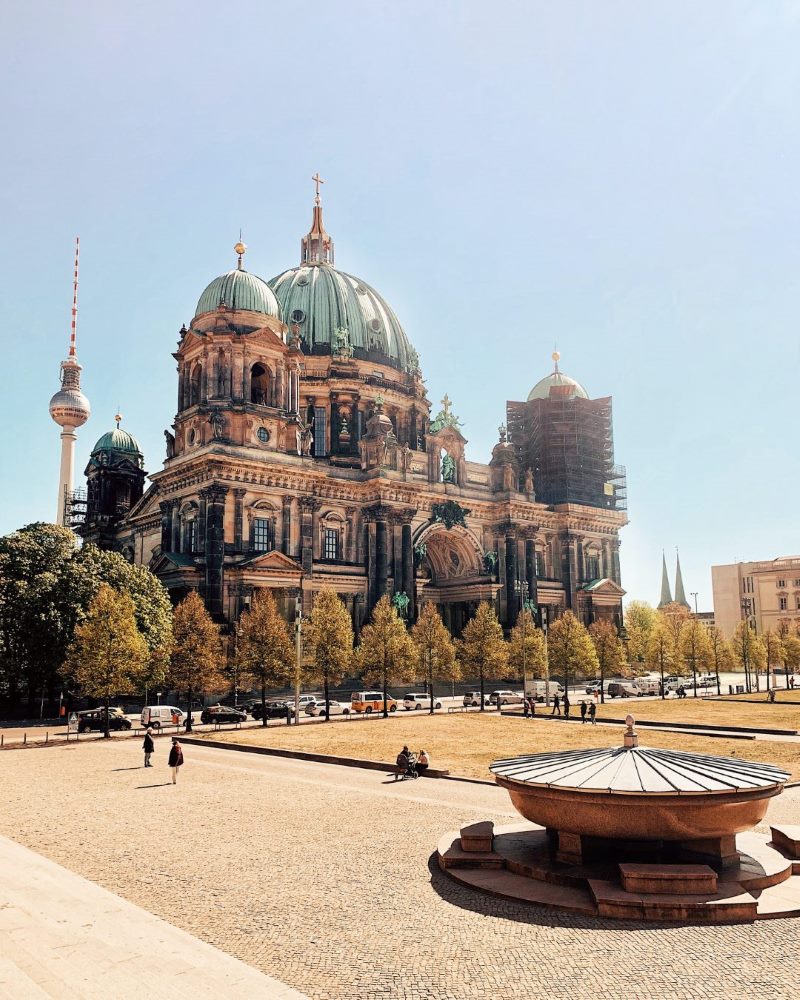
Explore the treasures of the Pergamon and New Museum with a skip the line guided tour. Admire the impressive artifacts and architectural structures while gaining valuable insight into their historical context from a knowledgeable guide. Marvel at the famous artifacts, such as the bust of Nefertiti, Market Gate of Miletus, Ishtar Gate, Byzantine boy, and much more. After the tour, continue your exploration of Museum Island by visiting the Bode Museum, Alte Nationalgalerie, and Altes Museum. Immerse yourself in the rich history of Berlin while experiencing some of its most impressive museums.
3. Welcomecard Museum Island Public Transport

The Berlin WelcomeCard Museum Island offers visitors the opportunity to explore the city’s main attractions for a reduced price. With the card, guests can enjoy free entrance to all the museums on Berlin’s Museum Island, including the Pergamon Museum, Bode Museum, Altes Museum, Alte Nationalgalerie, and Neues Museum. In addition, the card provides a 72-hour free access to the city’s public transport system and various discounts of up to 50% at tourist attractions, theaters, restaurants, and more. The package also includes a complimentary guidebook full of insider tips and tour suggestions to help visitors make the most of their stay. Guests can opt for free transport within zones A and B (Berlin) or A, B, and C (covering Berlin and Potsdam) when they choose their Berlin WelcomeCard Museum Island option. Located in the city center on an island in the Spree River, Berlin’s Museum Island is a must-see for any visitor to the German capital.
4. Skiptheline Pergamon Museum Museum Island
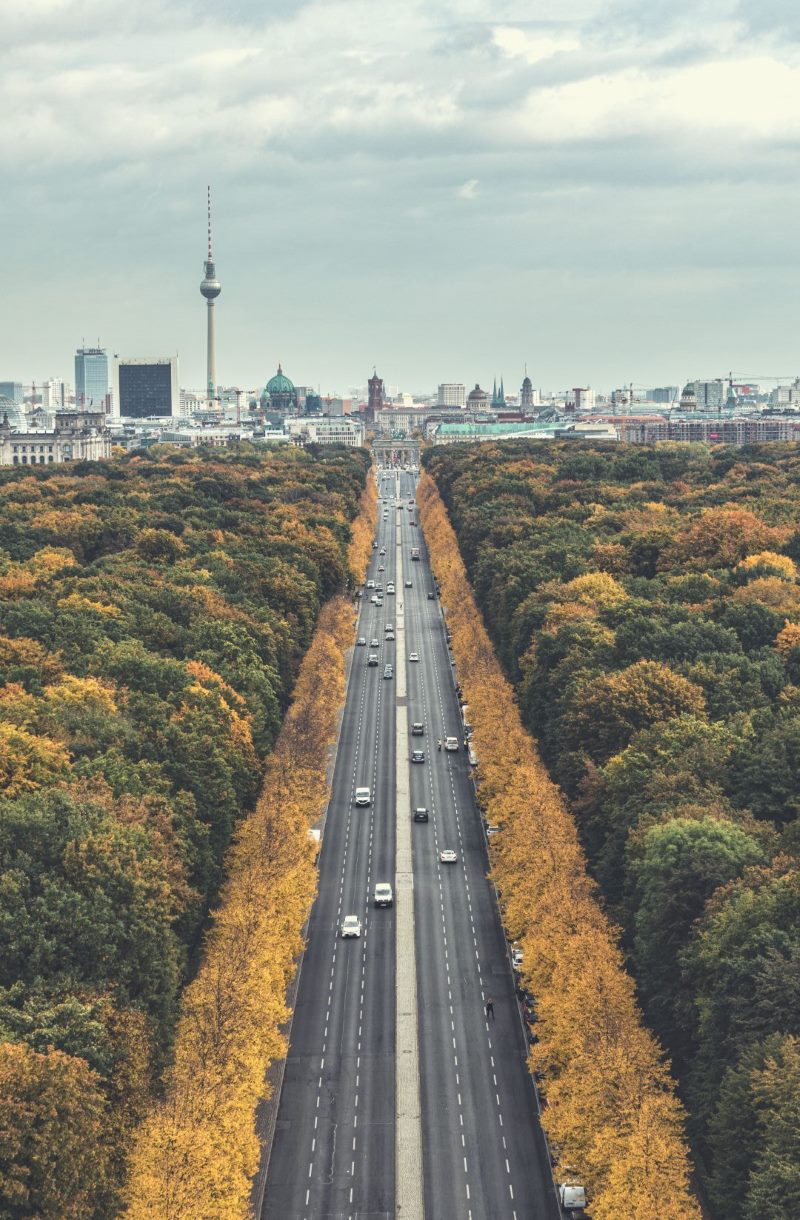
Enjoy a guided tour of the Pergamon Museum, one of the most visited art museums in Berlin, with skip-the-line admission tickets. This museum houses an impressive collection of ancient artifacts from Egypt, the Near East, and Islamic Art all under one roof. Learn about the Classical Antiques and the Middle Eastern cultures with expert live commentary from a licensed guide. Choose extended tour options to explore other museums in the area or visit the Berlin Cathedral. Convenient pickup options from your accommodation in Berlin are also available. The standard option includes a guided tour of the Pergamon Museum, skip-the-line tickets, and expert commentary. So, book your tour now and experience the best museum visits in Berlin.
5. Pergamon Museum Entrance Ticket
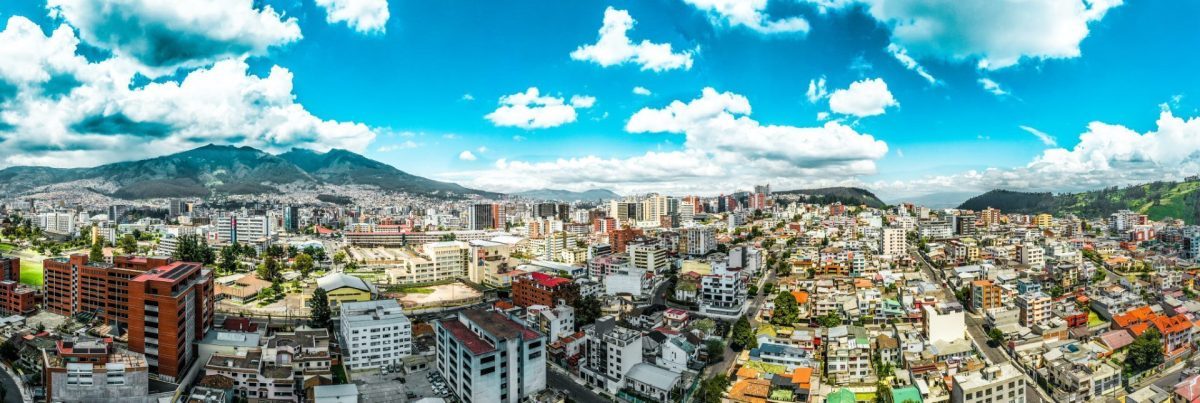
Visit the famous Berlin Museum Island and explore the Pergamon Museum with this entrance ticket. Although ongoing redevelopment work is still in progress, you will get to enjoy most of the museum’s exhibits. Witness the Pergamon antique collection, which houses one of the world’s most notable collections of Greek and Roman art, including architectural installations from Ancient Greece and Rome. Admire the Market Gate of Miletus, a prime example of Roman architecture from circa 100 AD. Unfortunately, the hall with the Pergamon Altar will remain closed until at least 2024. Head to the Middle East Museum to observe the 6000 years of cultural history of civilizations like Mesopotamia Assyria and Ana. Don’t miss the museum’s top draws, such as the colorful Ishtar Gate and the Processional way from Babylon, and the richly embellished stone facade of the Mshatta palace. Enhance your Berlin trip with this enlightening museum visit.
The Most Frequently Asked Questions about Berlin
Berlin is a city with a rich history and culture, and it’s understandable that many people have questions about it. In this blog post, we’ll answer some of the most frequently asked questions about Berlin to give you a better understanding of the city.1. What is the history of Berlin?
Berlin has a fascinating history that spans over 800 years. The city was founded in the 13th century and became the capital of Prussia in the 18th century. During World War II, Berlin was heavily bombed, and the city was divided into East and West after the war. The Berlin Wall, which divided the city for 28 years, finally fell in 1989, reuniting Berlin.2. What are the must-visit tourist attractions in Berlin?
Berlin has many tourist attractions that are definitely worth a visit. Some of the most popular attractions include:- The Brandenburg Gate
- The Berlin Wall Memorial
- Museum Island
- The Reichstag Building
- The Holocaust Memorial
- The Berlin Cathedral
3. What is the best way to get around Berlin?
The best way to get around Berlin is by using public transport. The city has an extensive network of buses, trams, and trains that are all operated by the Berliner Verkehrsbetriebe (BVG). You can purchase a single ticket or a day pass, which allows you to use all public transport for the entire day.4. When is the best time to visit Berlin?
The best time to visit Berlin is during the summer months, from June to August. During this time, the weather is warm and there are many outdoor events and festivals to enjoy. However, be prepared for large crowds and higher hotel prices during this time.5. What are the local specialties in Berlin?
Berlin is known for its delicious food and drink. Here are some local specialties that you must try:- Currywurst – a sausage served with a tomato-based sauce, sprinkled with curry powder
- Berliner Weisse – a sour beer that is often mixed with fruit syrup
- Buletten – meatballs that are served with potatoes and vegetables
- Doner Kebab – a Turkish-style pita bread filled with meat, vegetables, and sauce
6. What are the best areas to stay in Berlin?
Berlin has many great areas for tourists to stay in, depending on their preferences. Some of the most popular areas include:- Mitte – the central district of Berlin, with many tourist attractions nearby
- Prenzlauer Berg – a trendy neighborhood with many cafes, bars, and restaurants
- Kreuzberg – a multicultural neighborhood with a vibrant nightlife and great street art
- Charlottenburg – an upscale area with many luxury hotels and high-end shops
7. What is the cost of living in Berlin?
The cost of living in Berlin is relatively affordable compared to other major European cities. Accommodation in the city can be expensive, but there are also many budget options available. Eating out and public transport are also affordable, making Berlin a great destination for budget travelers.8. What are the nightlife options in Berlin?
Berlin is known for its vibrant nightlife, with many clubs, bars, and music venues to choose from. Some of the most popular areas for nightlife include Kreuzberg, Friedrichshain, and Mitte. Berlin is also famous for its techno music scene, with many clubs dedicated to this genre.9. What is the weather like in Berlin?
Berlin has a temperate climate, with warm summers and cold winters. During the summer months, temperatures can reach up to 30°C, while in the winter, temperatures can drop below freezing. Be prepared for rain throughout the year, as Berlin can experience showers at any time.10. What are some unique experiences to have in Berlin?
Berlin is a city full of unique experiences. Here are some of the things you can do to have a unique Berlin experience:- Visit the abandoned Spreepark amusement park
- Take a street art tour in Kreuzberg
- Visit the Stasi Museum to learn about East German history
- Have a drink at a rooftop bar with a view of the city
- Explore the underground bunkers used during World War II
Conclusion
Berlin is a city that has something for everyone, from history and culture to food and nightlife. Hopefully, this blog post has answered some of the most frequently asked questions about Berlin and given you a better understanding of what this fascinating city has to offer. Don’t forget to use public transport to get around, try the local specialties, and explore some of the unique experiences that Berlin has to offer.Berlin, one of Europe’s cultural marvel, is home to some of the world’s most renowned museums. From modern art to ancient treasures, Berlin offers a wealth of fascinating historical and cultural experiences that will amaze any museum lover. With so many museums to choose from, it can be overwhelming to decide which ones to visit. In this post, we will guide you through the best museum visits in Berlin, providing you with a list of must-visit museums that will immerse you in the city’s rich history and art. Get ready to discover some of the most captivating and unforgettable museum experiences in Berlin.
The 5 Best Museums in Berlin
- Pub Crawl Skiptheline Club Entry
- Pergamon New Museum Tour Museum
- Welcomecard Museum Island Public Transport
- Skiptheline Pergamon Museum Museum Island
- Pergamon Museum Entrance Ticket
The 5 Best Museums in Berlin
1. Pub Crawl Skiptheline Club Entry

Begin your night in Berlin with a local guide who will show you the city’s famous nightlife scene. With VIP entrance, skip the line and visit four different venues, including cocktail lounges, alternative dives, techno bars, bustling dance halls, and more. The tour includes complimentary shots, drink specials, and a train ticket. Unfortunately, this tour is not suitable for pregnant women, wheelchair users, and children under 18 years old. Explore Berlin’s dynamic nightlife and have an unforgettable evening.
2. Pergamon New Museum Tour Museum

Join this incredible guided tour to experience the highlights of the Pergamon and New Museum in Berlin. Admire the impressive artifacts and architectural structures of two museums, including the bust of Nefertiti, Market Gate of Miletus, Ishtar Gate, Byzantine boy, and more. With a skip the line entry, you’ll gain a critical understanding of the collection’s relationship to Berlin’s past and present. After the tour, explore the Bode Museum, Alte Nationalgalerie, and the Altes Museum at your own pace. This tour is hosted by an expert guide who will share stories about the heavily destroyed museums after WWII and introduce you to the Mesopotamian, Assyrian, Babylonian, Greek, and Egyptian artifacts. Don’t miss this chance to discover the best museums in Berlin during your stay.
3. Welcomecard Museum Island Public Transport

The Berlin WelcomeCard Museum Island offers a great way to explore the city’s top attractions while saving money. With this card, you’ll get free access to the public transport system for 72 hours and discounts of up to 50% at many venues and events.
One of the highlights is access to all of the museums on Museum Island, including the Pergamon Museum, Bode Museum, Altes Museum, Alte Nationalgalerie, and Neues Museum. Plus, you’ll receive a complimentary guidebook with insider tips and tour suggestions to make the most of your visit.
The Museum Island is located in the heart of the city on an island in the Spree River, making it easy to visit multiple museums in one day. Choose from options that include free transport within either zones A and B (Berlin) or A, B, and C (covering Berlin and Potsdam). Don’t miss out on this affordable way to explore the best museum visits in Berlin.
4. Skiptheline Pergamon Museum Museum Island

Enjoy a guided tour of the Pergamon Museum at the Museum Island in Berlin and discover a wide variety of ancient artworks. With skip-the-line admission tickets, you’ll save time and avoid long lines. Explore Classical Antiques Ancient Near East and Islamic Art and learn all about ancient civilizations from Egypt to the Near East.
Choose extended tour options to visit other museums in the area like the Berlin Cathedral and discover more of Museum Island. There is also a convenient pickup option from your accommodation in Berlin.
For the standard option, take a guided tour of the Pergamon Museum and see ancient architecture, German post-antiquity art, Middle Eastern and Islamic art all under one roof.
The tour includes a private tour of the Pergamon Museum and the Berlin Cathedral (if chosen), skip-the-line tickets to Pergamon Museum and Berlin Cathedral (for 4 and 5-hour options) and a licensed guide to provide expert live commentary throughout the tour.
5. Pergamon Museum Entrance Ticket
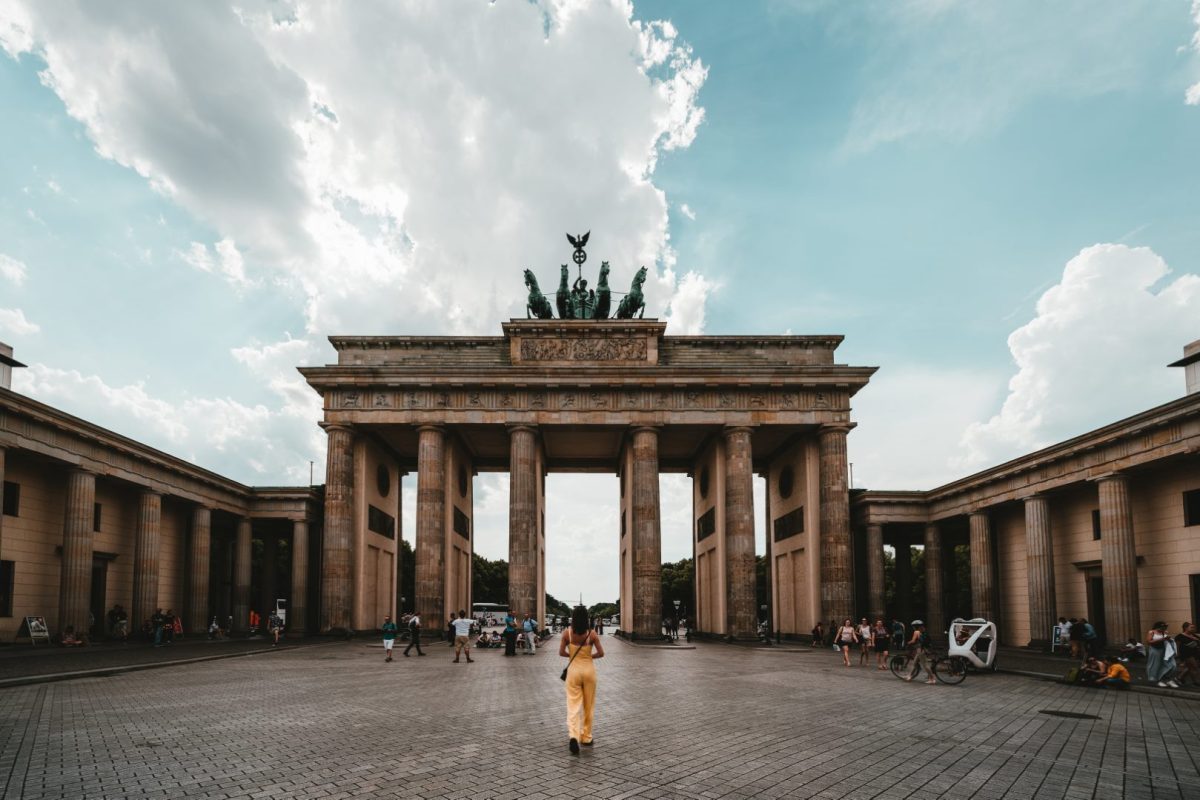
Visit the famous Pergamon Museum in Berlin and discover an exquisite collection of Greek and Roman art from the ancient world. Marvel at the Market Gate of Miletus, an impressive example of Roman architecture, and explore the Middle East Museum, home to a vast range of cultural artifacts from Mesopotamia, Assyria, and Ana. You will also have the chance to see the Ishtar Gate and the Processional Way from Babylon, two of the museum’s main highlights. While some areas of the museum are undergoing redevelopment, you will still be able to enjoy most areas of this world-renowned attraction. Don’t miss the chance to visit one of the most significant museums of antiquities in the world.
The Most Frequently Asked Questions About Berlin
Berlin is the capital city of Germany and a popular tourist destination, attracting millions of visitors each year. With so much to see and do in this vibrant city, it’s no surprise that visitors often have questions about Berlin. In this blog post, we’ll answer some of the most frequently asked questions about Berlin.1. What’s the Best Time to Visit Berlin?
The best time to visit Berlin is during the summer months of June to August when the weather is warm and sunny. However, this is also peak tourist season, so expect crowds and higher prices. Spring and autumn can also be good times to visit, with mild weather and fewer tourists.2. What are the Must-See Sights in Berlin?
There are a lot of must-see sights in Berlin, but some of the most popular include:- The Brandenburg Gate
- The Berlin Wall
- Museum Island
- The Reichstag Building
- The Holocaust Memorial
3. Is Berlin a Safe City?
Overall, Berlin is considered a safe city. Crime rates are low, and tourists are generally not targeted. However, as with any big city, it’s important to be aware of your surroundings and take basic safety precautions such as not leaving valuables unattended.4. What’s the Public Transportation Like in Berlin?
Berlin has an excellent public transportation system, consisting of buses, trams, and a subway system known as the U-Bahn. The city also has a bike-sharing program, making it easy to explore by bike.5. What’s the Nightlife Like in Berlin?
Berlin is known for its vibrant nightlife, with a wide variety of bars, clubs, and restaurants. Some of the most popular nightlife districts include Kreuzberg, Friedrichshain, and Neukölln.6. What’s the Food Like in Berlin?
Berlin has a diverse food scene, with a mix of traditional German cuisine and international options. Some of the must-try dishes include currywurst, schnitzel, and spätzle. Vegetarian and vegan options are also widely available.7. Are English Speakers Welcome in Berlin?
Yes, English is widely spoken in Berlin, especially in the tourist areas. However, it’s always a good idea to learn a few basic German phrases as a sign of respect for the local culture.8. What are the Best Museums to Visit in Berlin?
Berlin has many excellent museums, but some of the best include:- The Pergamon Museum
- The Berlin Museum of Natural History
- The DDR Museum
- The Jewish Museum
- The Topography of Terror
9. What’s the Currency Used in Berlin?
The currency used in Berlin (and all of Germany) is the Euro. ATMs are widely available, and credit cards are accepted at most restaurants and shops.10. What Festivals Take Place in Berlin?
Berlin is home to a number of festivals throughout the year, including:- The Berlinale Film Festival
- The Karneval der Kulturen
- The Berlin Marathon
- The Festival of Lights
The Bottom Line
Whether you’re a first-time visitor to Berlin or a seasoned traveler, there’s always something new to discover in this exciting city. From world-class museums to vibrant nightlife, Berlin has something for everyone. By answering some of the most frequently asked questions about Berlin, we hope to make your trip planning a little bit easier.Berlin boasts of being one of the most vibrant and culturally rich cities in the world. With an abundance of history, art, and culture, it is no wonder that Berlin is home to some of the most mesmerizing museums in Europe. A visit to any of these museums promises to be an experience of a lifetime. Whether you are a history buff, an art connoisseur, or just an enthusiastic learner, there is something for everyone. In this post, we’ve curated a list of the best museum visits in Berlin that you cannot miss. So, get ready for a journey through time and experience the rich cultural tapestry that Berlin has to offer.
The 5 Best Museums in Berlin
- Pub Crawl SkiptheLine Club Entry
- Pergamon New Museum Tour Museum
- WelcomeCard Museum Island Public Transport
- Skiptheline Pergamon Museum Museum Island
- Pergamon Museum Entrance Ticket
The 5 Best Museums in Berlin
1. Pub Crawl SkiptheLine Club Entry
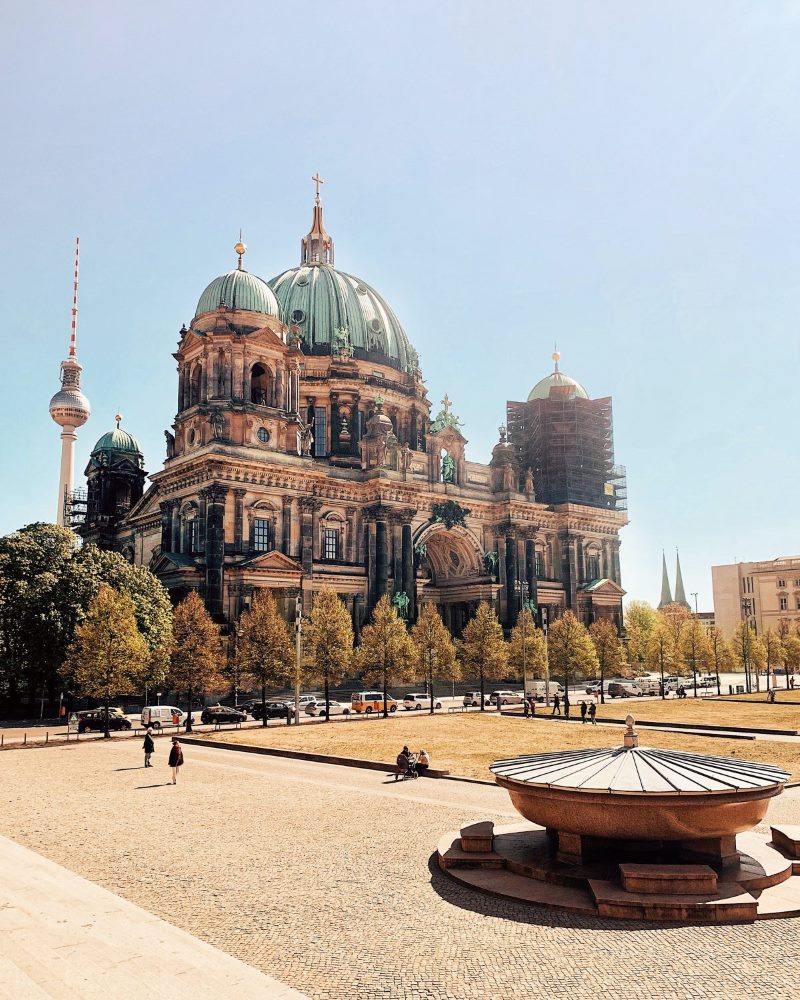
Begin your evening with discovering Berlin’s famous nightlife scene on this Pub Crawl SkiptheLine Club Entry tour with a local guide. With VIP entrance to the club, skip the line and visit 4 different venues including cocktail lounges, alternative dives, techno bars, bustling dance halls, and more. Enjoy complimentary shots and drink specials subject to the venue. The tour includes a train ticket and is not suitable for pregnant women, wheelchair users, and children under 18 years. Experience every night as a new adventure on this pub crawl and make new friends.
2. Pergamon New Museum Tour Museum

Explore two of Berlin’s most impressive museums, the Pergamon and New Museum, on this skip-the-line guided tour. Admire the extensive collection of artifacts and architectural structures while gaining a critical understanding of their relation to Berlin’s past and present. Highlights of the tour include seeing the famous bust of Nefertiti, the Ishtar Gate, the Byzantine boy, and the Market Gate of Miletus, among many other treasures. After the tour, continue your exploration of Museum Island with visits to the Bode Museum, Alte Nationalgalerie, and the Altes Museum. Hosted by an expert guide, this tour offers a fascinating journey through history and a unique look at some of the world’s most iconic cultural heritage.
3. WelcomeCard Museum Island Public Transport
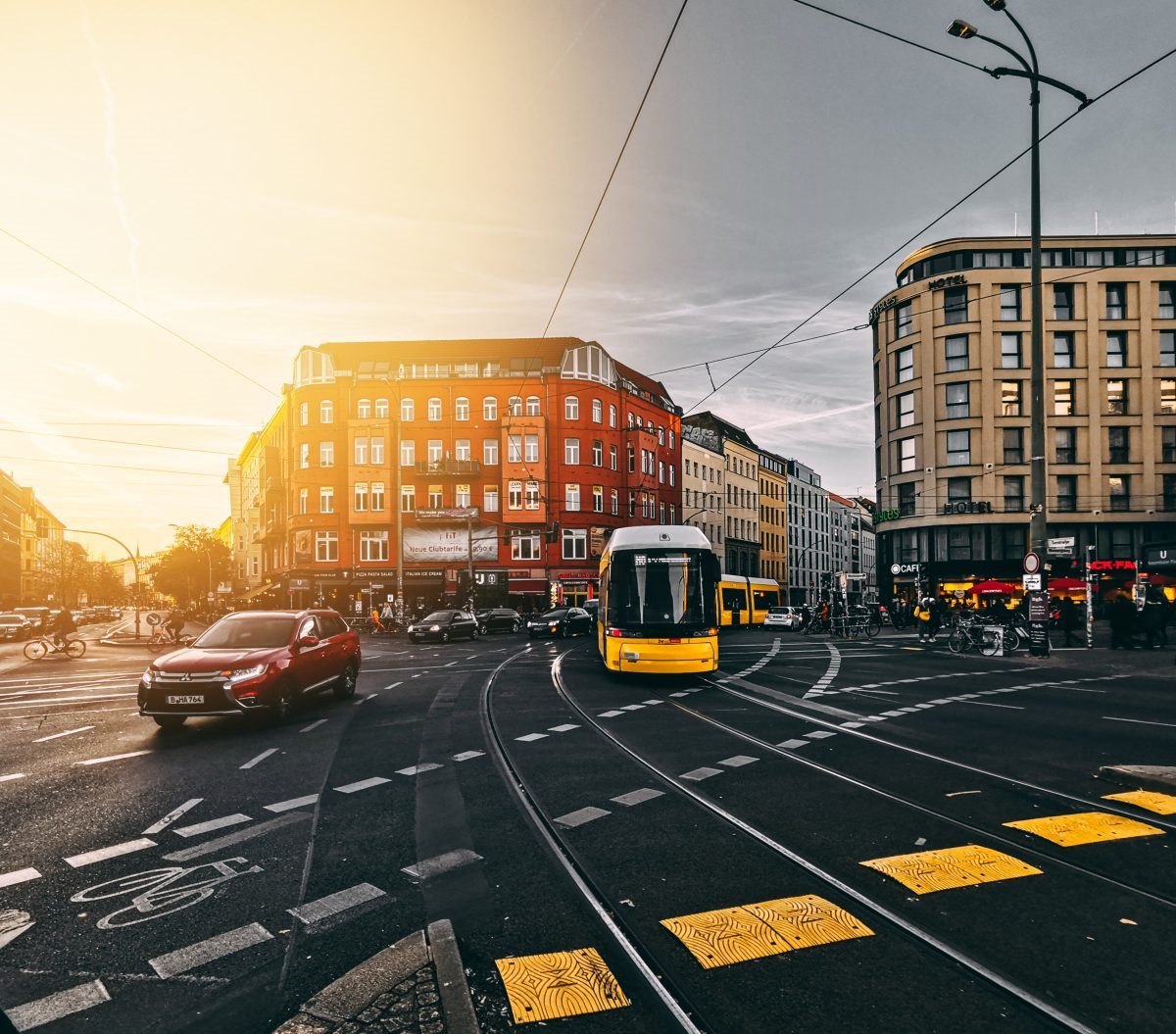
The Berlin WelcomeCard Museum Island is your pass to explore the city’s most famous museums while also getting access to its public transport system for 72 hours. In addition to being able to visit the Pergamon Museum, Bode Museum, Altes Museum, Alte Nationalgalerie, and Neues Museum on Berlin’s Museum Island for free, you’ll also receive discounts at many tourist attractions, venues, and events. This card offers you up to 50% off on sightseeing tours, theaters, restaurants, and more. A free guidebook is included to help you plan your stay with insider tips and suggested tours. Choose the Berlin WelcomeCard Museum Island option with free transport within zones A and B (Berlin) or A, B, and C (Berlin and Potsdam) to complete your exploration of the city. Don’t miss the chance to see more of Berlin for less with the Berlin WelcomeCard Museum Island.
4. Skiptheline Pergamon Museum Museum Island

Enjoy a guided tour of the Pergamon Museum at the Museum Island in Berlin and discover ancient artifacts from Egypt, the Near East and Islamic art. Benefit from skip-the-line admission tickets to the museum and save valuable time. Choose from extended tour options to visit other nearby museums, including the Berlin Cathedral. Learn about ancient civilizations with expert live commentary from a licensed guide. If you opt for the standard tour, you’ll get to see German post-antiquity art, ancient architecture, and Middle Eastern and Islamic art all housed in one place. Convenient pickup from your accommodation in Berlin is available. Skip-the-line tickets to the Berlin Cathedral are also included in the 4 and 5-hour options.
5. Pergamon Museum Entrance Ticket
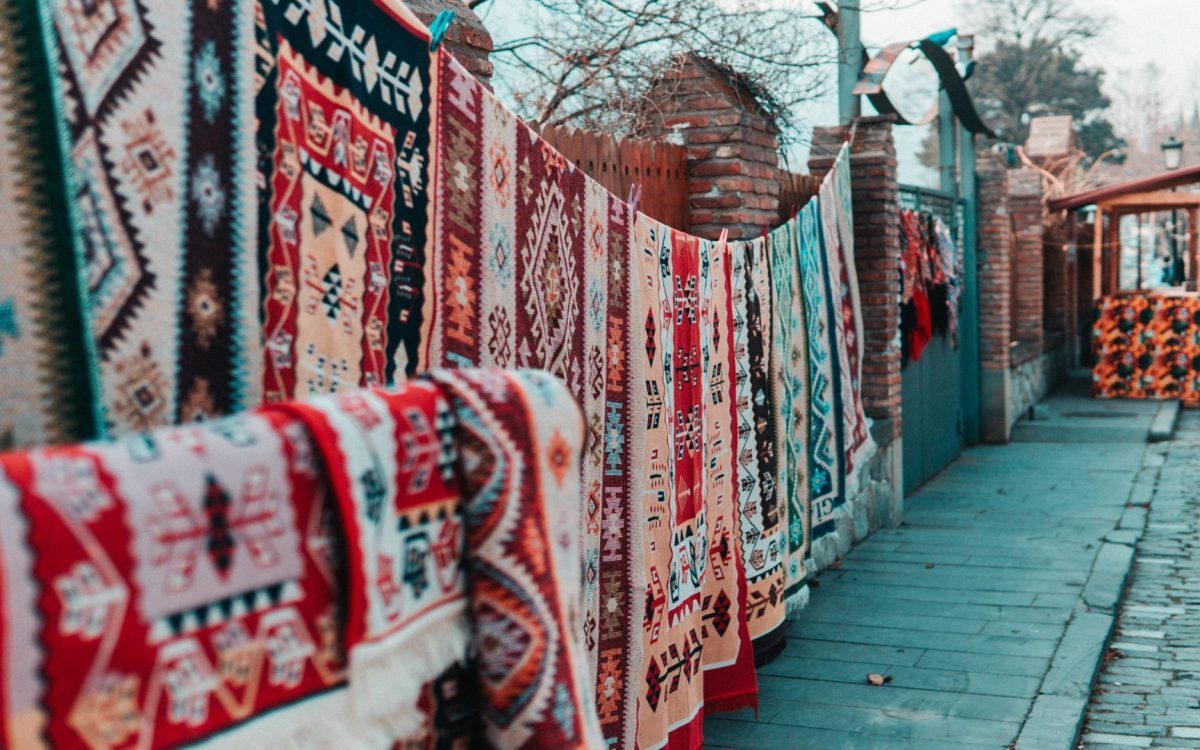
Visit one of the most famous attractions of the Berlin Museum Island- the Pergamon Museum with an entrance ticket. Witness the ongoing redevelopment of the museum which is set to become a worldwide attraction among the Berlin museums. Admire the Pergamon Collection, which is one of the most significant collections of Greek and Roman art across the globe. Embellished with architectural installations from ancient Rome and Greece, including the Market Gate of Miletus, dating back to 100 AD. Also, explore the Middle East Museum which boasts an impressive collection of artifacts from 6000 years of civilization, featuring Mesopotamia, Assyria, and Ana. Don’t miss the main attractions, such as the colorful Ishtar Gate and the Processional way from Babylon, or the richly decorated stone facade of the Mshatta palace. Note that the hall with the Pergamon Altar will remain closed until at least 2024 due to ongoing renovations.
Most Frequently Asked Questions About Berlin: A Comprehensive Guide
If you’re planning a trip to Berlin, you’re sure to have lots of questions! Here’s a comprehensive guide to the most frequently asked questions about the city, including everything from transportation to accommodation, food to attractions, and more.1. What is Berlin’s climate like?
Berlin has a temperate climate with four distinct seasons. Summers are warm and humid, with average temperatures of around 20-25°C. Winters can be quite cold, with temperatures often below freezing and occasional snowfall. Spring and autumn are mild, but can also be unpredictable with sudden changes in weather.2. How do I get around in Berlin?
Berlin has an excellent public transport system consisting of buses, trains, trams, and underground lines. The best way to get around is by purchasing a Berlin Welcome Card, which provides unlimited travel on all public transport options. Another great way to see the city is by bike, and there are several bike rental options available throughout Berlin.3. What are the must-see attractions in Berlin?
Berlin is full of incredible attractions, but some of the must-see sights include the Brandenburg Gate, the Berlin Wall, the Reichstag building, Checkpoint Charlie, Museum Island, and the Holocaust Memorial. Additionally, the city is known for its world-class museums and galleries, so don’t miss the opportunity to explore places like the Pergamon Museum, the Alte Nationalgalerie, and the Gemäldegalerie.4. Where are the best places to eat in Berlin?
Berlin is a food lover’s paradise, with everything from traditional German cuisine to fusion dishes from around the world. Some of the best places to eat in Berlin include the street food scene in Kreuzberg and Neukölln, classic German restaurants like Zur Letzten Instanz, and trendy cafes and bars in areas like Mitte and Prenzlauer Berg.5. How can I experience Berlin’s nightlife?
Berlin is renowned for its vibrant nightlife scene, and there are plenty of options for party-goers of all ages and tastes. Some of the best areas for nightlife in Berlin include Kreuzberg, Neukölln, and Friedrichshain, where you’ll find everything from techno clubs to cocktail bars and alternative music venues.6. Where should I stay in Berlin?
The best area to stay in Berlin depends on your interests and budget. Mitte is a popular area for tourists, with plenty of attractions and well-known hotels, while Prenzlauer Berg is a great option for those looking for a trendy and laid-back atmosphere. Kreuzberg and Neukölln are perfect for those looking for a more alternative and offbeat experience.7. What should I know about Berlin’s history?
Berlin has a fascinating and complex history, with many of the city’s most famous landmarks and attractions connected to its past. Key events and periods in Berlin’s history include the construction and fall of the Berlin Wall, World War II and the Holocaust, the Weimar Republic, and the Cold War. Make sure to visit some of Berlin’s iconic historical sites and museums, like the Topography of Terror or the Berlin Wall Memorial, to learn more about the city’s past.8. What cultural events are happening in Berlin?
Berlin is home to a vibrant arts and culture scene, with plenty of events and festivals held throughout the year. Some of the most popular events include the Berlinale Film Festival, which takes place each February, the Berlin Art Week in September, and the Karneval der Kulturen, a multicultural parade and festival held in May.9. How safe is Berlin?
Like any major city, Berlin has its share of crime and safety concerns. However, overall, Berlin is a safe city, and most visitors should feel comfortable walking around and using public transport. As with any city, it’s always a good idea to be aware of your surroundings and take basic safety precautions, like not leaving valuables unattended and using common sense when walking alone at night.10. What should I pack for my trip to Berlin?
When packing for Berlin, it’s important to keep the climate in mind. In the summer, you’ll want light, breathable clothing, while in the winter, you’ll need warm layers and a jacket. Make sure to bring comfortable walking shoes, as there’s lots of ground to cover in Berlin, and don’t forget essentials like a camera, sunscreen, and an adapter for electrical outlets.Conclusion
In summary, Berlin is an incredible city with something to offer every kind of traveler. With its rich history, world-class attractions, vibrant nightlife scene, and diverse food scene, Berlin is the perfect destination for anyone seeking an unforgettable European adventure. So pack your bags and get ready to explore all that Berlin has to offer!Berlin is a city that is steeped in history and culture, with so much to see and explore. One of the best ways to immerse yourself in the city’s rich history and art is by visiting its museums. From contemporary art to ancient artifacts, Berlin has a diverse range of museums that cater to every interest. In this post, we will take you on a tour of the best museum visits in Berlin, highlighting some of the most renowned and must-visit museums in the city. So, let’s grab our museum maps and dive into the city’s artistic and historical treasures.
The 5 Best Museums in Berlin
- Pub Crawl SkiptheLine Club Entry
- Pergamon New Museum Tour Museum
- WelcomeCard Museum Island Public Transport
- Skiptheline Pergamon Museum Museum Island
- Pergamon Museum Entrance Ticket
The 5 Best Museums in Berlin
1. Pub Crawl SkiptheLine Club Entry

Experience Berlin’s famous nightlife scene with a local guide on this pub crawl tour. Skip the line with VIP entrance to the club and explore four different venues plus a popular club. Begin your evening by getting to know your guide and other like-minded travelers, then head out into the Berlin night to your first stop. After loosening up, continue on to three additional venues of bars, pubs, and dance halls.
Every night is a new experience on this pub crawl tour. Get to know Berlin’s nightlife as you make four stops ranging from cocktail lounges, alternative dives, techno bars, bustling dance halls, and more. The tour includes a local nightlife guide, five stops (four bars/pubs/dance halls and one club), complimentary shots, drink specials (subject to the venue), skip-the-line club entrance, and a train ticket.
Please note: this tour is not suitable for pregnant women, wheelchair users, or children under 18 years.
2. Pergamon New Museum Tour Museum

Explore the impressive artifacts and architectural structures of two museums on this skip the line guided tour of the Pergamon and New Museum. Admire the bust of Nefertiti, the Market Gate of Miletus, the Ishtar Gate, the Byzantine boy and so much more. Hosted by an expert guide, you’ll gain a critical understanding of the collection’s relationship to Berlin’s past and present. Learn about the heavy destruction of the museums after WWII and discover the Mesopotamian, Assyrian, Babylonian, Greek and Egyptian cultures. After the guided tour, you’ll have the opportunity to explore the Bode Museum, Alte Nationalgalerie, and the Altes Museum on your own. Book now for an unforgettable museum experience in Berlin.
3. WelcomeCard Museum Island Public Transport

Explore the best of Berlin with the Berlin WelcomeCard Museum Island. This ticket offers you 72 hours of free access to the city’s public transport system, as well as discounts of up to 50% on many tourist attractions, venues and events. With the Berlin WelcomeCard Museum Island, you can enjoy free entrance to all the museums on Berlin’s Museum Island including the Pergamon Museum, Bode Museum, Altes Museum, Alte Nationalgalerie, and Neues Museum. The Museum Island is located in the city center on an island in the Spree River and is home to some of the finest collections of art and artifacts in the world.
The Berlin WelcomeCard Museum Island also includes a complimentary guidebook, which offers tour suggestions and insider tips to help you make the most of your stay in Berlin. When you choose your Berlin WelcomeCard Museum Island option, you can opt for free transport within zones A and B (Berlin) or A, B, and C (covering Berlin and Potsdam). This ticket is the perfect way to see more of Berlin for less and to experience the best of the city’s museums and attractions.
4. Skiptheline Pergamon Museum Museum Island
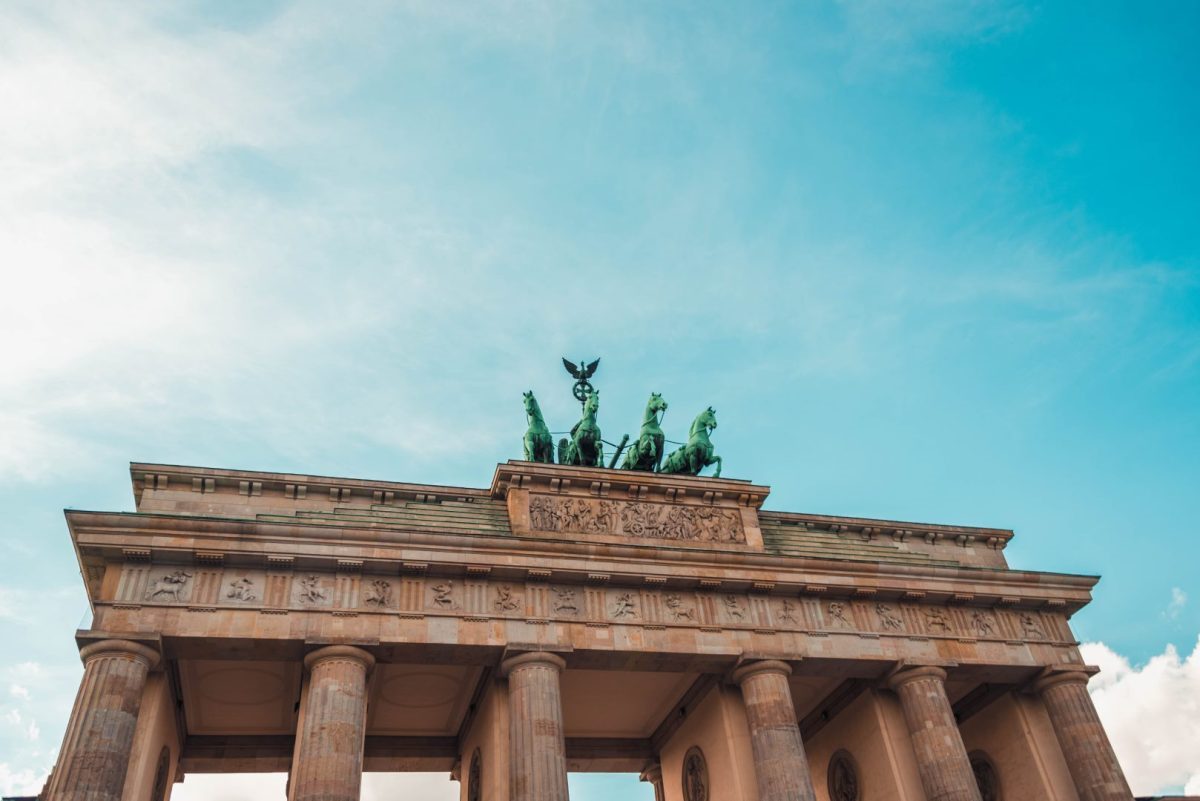
Enjoy a guided tour of the Pergamon Museum at the Museum Island in Berlin, without having to wait in long lines, and discover a collection of Classical Antiques, Ancient Near East, and Islamic Art. Opt for extended tour options to visit additional museums in the area, including the Berlin Cathedral. See ancient architecture, German post-antiquity art, and Middle Eastern and Islamic art all in one place. Choose to include convenient pickup from your accommodation in Berlin. Your tour includes skip-the-line tickets to the Pergamon Museum, and if chosen, skip-the-line tickets to Berlin Cathedral as well. Learn about ancient civilizations from expert live commentary provided by your licensed guide.
5. Pergamon Museum Entrance Ticket

Visit the world-renowned Pergamon Museum on Museum Island in Berlin, and explore two of its most famous exhibits: the colorful Ishtar Gate and the Processional Way from Babylon, and the richly decorated stone façade of the Mshatta palace. While ongoing renovations mean the hall with the impressive Pergamon Altar is closed until at least 2024, you can still enjoy much of the museum, including the impressive Pergamon antique collection, with its significant collection of Greek and Roman art and architectural installations from Ancient Greece and Rome. You’ll also get the chance to see the Middle East Museum’s 6,000-year cultural history of civilizations such as Mesopotamia Assyria and Ana. With your Pergamon Museum entrance ticket, you have a chance to experience one of the best museum visits in Berlin.
Frequently Asked Questions about Berlin
Berlin is a fascinating city full of history, culture, and nightlife. It is no surprise that each year, millions of tourists from all over the world are attracted to this bustling metropolis. Berlin is a melting pot of different cultures, traditions, and religions. Many visitors are curious about what to expect, how to get around, and what to see. In this blog post, we will answer the most frequently asked questions about Berlin to make your trip to the German capital more enjoyable and stress-free.1. What is the best time to visit Berlin?
Berlin has a temperate oceanic climate, which means that rainfall is spread throughout the year, and temperatures are mild. The best time to visit Berlin is from May to September when the weather is warm and sunny, and many outdoor festivals and events take place. However, summer is also the peak tourist season, so expect big crowds and higher prices. If you are on a budget, consider visiting during the shoulder seasons of April-May or September-October, when airfares and hotel rates are cheaper, and the city is less crowded.
2. What is the best way to get around Berlin?
Berlin has an excellent public transportation network that includes trams, buses, U-Bahn (underground), and S-Bahn (urban rail) lines. The most convenient and cost-effective way to get around Berlin is to buy a daily or weekly ticket that allows unlimited travel on all modes of public transport. You can purchase tickets at vending machines located in stations, or through the BVG app, which also provides real-time information about delays and disruptions. Taxis and bike rentals are also available, but they can be pricey, especially during rush hour.
3. What are the must-see sights in Berlin?
Berlin is a city full of history and cultural landmarks. The most famous attractions include the Brandenburg Gate, the Berlin Wall, Checkpoint Charlie, the Holocaust Memorial, the Reichstag Building, and Museum Island. But there is much more to discover beyond the mainstream sights. Take a stroll through the trendy districts of Kreuzberg and Neukölln, visit Prenzlauer Berg’s hip boutiques and cafes, or explore the vibrant street art scene in Friedrichshain. Don’t forget to sample some of the local cuisine, such as Currywurst, Döner Kebab, or Berliner Pfannkuchen (German donuts).
4. How safe is Berlin for tourists?
Berlin is generally a safe city, but it’s always wise to take safety precautions when traveling. Be aware of pickpockets, especially in crowded tourist areas, and keep an eye on your belongings. Avoid walking alone in desolate areas at night, and be cautious when using public transport. It’s also advisable to carry a copy of your documents with you and leave valuables in a safe place such as a hotel safe. In case of an emergency, call 110 for the police or 112 for medical assistance.
5. What is the nightlife like in Berlin?
Berlin is famous for its nightlife, and rightly so. The city boasts some of the best bars, clubs, and music venues in Europe, offering something for everyone. The most popular nightlife districts are Kreuzberg, Friedrichshain, and Mitte, where you can find everything from techno clubs to cozy cocktail bars. The best way to experience Berlin’s nightlife is to join a pub crawl or party tour, where you can meet other travelers and locals and explore the city’s diverse club scene.
6. What is the currency used in Berlin?
The currency used in Berlin, and Germany in general, is the Euro (EUR). Cash is widely accepted, although many restaurants, shops, and hotels also accept credit and debit cards, especially Visa and Mastercard. ATMs are abundant in Berlin, and most of them accept international cards. It’s advisable to inform your bank beforehand about your travel plans to avoid any issues with your card.
7. What language do people speak in Berlin?
The official language of Germany is German. However, due to its multicultural population, Berlin is also home to many other languages, such as English, Turkish, Arabic, and Polish. Most people in the tourism industry, such as hotel staff, tour guides, and restaurant servers, speak English fluently, so you shouldn’t have any difficulty communicating.
8. Can I visit Berlin on a budget?
Yes, you can definitely visit Berlin on a budget. There are plenty of free or low-cost activities and sights to see, such as walking tours, street art, and parks. Many museums and galleries offer discounts or even free entry on certain days of the week or month. Food and drinks in Berlin are generally affordable, and there are many budget accommodation options, such as hostels and guesthouses. With a bit of research and planning, you can enjoy Berlin without breaking the bank.
Conclusion
Berlin is a vibrant and exciting city that has something for everyone. Whether you’re interested in history, culture, nightlife, or just want to explore a new place, Berlin won’t disappoint. By following these tips and guidelines, you can make the most of your trip to Berlin and create unforgettable memories.
Berlin is a city bursting with history and culture, from the remnants of the Berlin Wall to the vibrant art scene. Amongst all the things to see and do in this bustling city, the museums stand out as a must-visit for any culture enthusiast. From world-renowned galleries to quirky alternative spaces, Berlin’s museum scene has something for everyone. In this post, we’ll be highlighting the best museum visits Berlin has to offer for an unforgettable cultural experience. So, whether you’re a history buff, art lover or just looking for a unique day out, read on to discover some of the city’s most fascinating museums.
The 2 Best Museums in Berlin
The 2 Best Museums in Berlin
1. Berlin: Pub Crawl with Skip-the-Line Club Entry
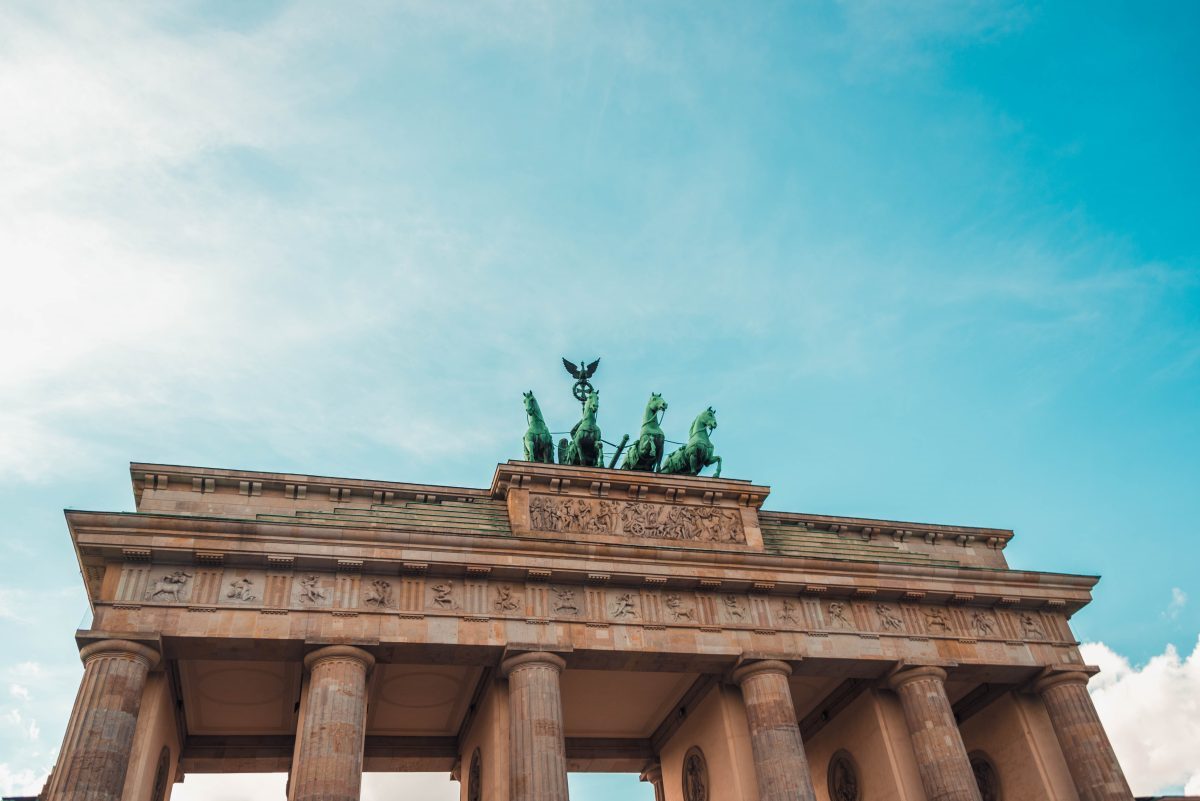
Discover Berlin’s famous nightlife scene with a local guide on this tour that includes skip-the-line VIP entrance to a popular club. Visit four different venues including cocktail lounges, alternative dives, techno bars, bustling dance halls, and more. Your guide will take you to each spot, providing insider information and recommendations along the way. Complimentary shots and drink specials (subject to the venue) are included, as well as a train ticket. Please note that this tour is not suitable for pregnant women, wheelchair users, or children under 18 years of age.
2. Berlin: Icebar Entrance with 3 Drinks

Cool off in Berlin’s Icebar with an entrance ticket that includes complimentary drinks served in glasses made out of ice. Prepare for a Polar Expedition and wrap up warm in the provided winter clothing as you enter a bar built from 69000 kilos of ice. Take your time to marvel at the impressive construction and enjoy a welcome cocktail in the lounge before entering the cool climate of the Icebar. Spend 20 minutes savoring your drinks as you sit on ice benches and take awe-inspiring photos of the chilly surrounding. This is an experience you don’t want to miss!
The Most Frequently Asked Questions About Berlin
Berlin is one of the most popular tourist destinations in Europe, attracting millions of visitors every year. As the capital of Germany, Berlin is an exciting and diverse city that has a rich history, vibrant culture, and many iconic landmarks. If you’re planning a trip to Berlin, you may have some questions about the city. In this blog post, we’ll answer some of the most frequently asked questions about Berlin.1. What is the best time to visit Berlin?
The best time to visit Berlin depends on what you’re interested in. If you want to experience the city’s outdoor events and festivals, summer is the best time to visit. The weather is warm, and there are many outdoor events, such as the Berlin Marathon, Open Air Cinema, and the International Beer Festival. However, summer is also the busiest time of the year, and prices can be high.If you want to avoid the crowds and enjoy lower prices, you may want to visit during the shoulder seasons of spring or fall. The weather can be unpredictable, but there are still plenty of things to see and do in Berlin, such as visiting the museums and galleries, going on a boat tour, or enjoying a bike ride in the city’s parks.Winter in Berlin can be cold, dark, and damp, but it’s also a magical time of the year. The city is beautifully illuminated with Christmas lights, and there are many Christmas markets where you can enjoy a hot drink and some traditional German food.2. What are the must-see sights in Berlin?
Berlin is a city with a rich history and culture, and there are many must-see sights that you shouldn’t miss. Some of the most popular ones include:- The Brandenburg Gate: This iconic landmark is one of the most recognizable symbols of Berlin.
- The Berlin Wall: A visit to the Berlin Wall is a must for anyone interested in the city’s history.
- Museum Island: This collection of five world-renowned museums is home to some of the most important cultural treasures in the world.
- The Reichstag: The German parliament building offers stunning views of the city from its glass dome.
- The Holocaust Memorial: This striking memorial commemorates the millions of Jews who were killed during the Holocaust.
3. How can I get around Berlin?
Berlin has an extensive public transportation system that consists of buses, trams, trains, and subways. The easiest way to get around the city is by using a combination of these modes of transport. You can use a single ticket or a day pass that allows unlimited travel on all forms of transport within Berlin’s A, B, and C zones.If you prefer a more leisurely way of exploring the city, you can also rent a bike or take a walking tour. Berlin is a very bike-friendly city, and there are many bike rental shops and bike tour companies to choose from.4. What is the currency used in Berlin?
The currency used in Berlin (and the rest of Germany) is the Euro (EUR). Most shops, restaurants, and hotels accept credit cards, but it’s always a good idea to carry some cash with you, especially if you’re planning on using public transportation or visiting smaller shops and cafes.5. What is the nightlife like in Berlin?
Berlin is famous for its dynamic and diverse nightlife. The city has a vibrant clubbing scene that attracts party-goers from all over the world. The clubs in Berlin are known for their unique atmosphere, top-notch DJs, and non-stop parties that can last well into the next day.If you prefer something more low-key, Berlin also has many bars and pubs that offer a more relaxed atmosphere. The city’s neighborhoods, such as Kreuzberg, Friedrichshain, and Prenzlauer Berg, are home to many trendy bars and cafes that are perfect for a night out with friends.6. Is it safe to visit Berlin?
Berlin is generally a safe city to visit, but it’s always a good idea to take some precautions to ensure your safety. Like in any large city, there are some areas that are less safe than others, especially at night. It’s important to stay aware of your surroundings, avoid carrying large amounts of cash, and be cautious when visiting crowded tourist attractions.7. What is the food like in Berlin?
Berlin is a melting pot of cultures, and its food scene reflects this diversity. You can find anything from traditional German cuisine, such as Schnitzel and Currywurst, to international dishes, such as Vietnamese Pho and Korean BBQ.The city is also known for its street food scene, which offers a wide variety of delicious and affordable options. Some of the most popular street foods in Berlin include Döner Kebab, Falafel, and Currywurst.Conclusion
Berlin is a fascinating and vibrant city that has something to offer for everyone. Whether you’re interested in history, culture, food, or nightlife, Berlin has it all. By answering some of the most frequently asked questions about Berlin, we hope to help you plan the perfect trip to this amazing city. Remember to use relevant keywords in your search for more information and to make the most out of your Berlin experience.Berlin is a city that has always been surrounded by history and art. It’s no wonder that the city is home to some of the most charming and captivating museums in the world, making it a paradise for history buffs and art enthusiasts alike. From contemporary art to ancient artifacts, Berlin boasts a rich collection of museums that cater to all interests. In this post, we’ll explore the best museum visits in Berlin, highlighting must-see exhibits and collections that’ll give you a glimpse into the fascinating history and culture of the city. So, let’s dive in and discover the most awe-inspiring museums that Berlin has to offer.
The 2 Best Museums in Berlin
The 2 Best Museums in Berlin
1. Berlin: Pub Crawl with Skip-the-Line Club Entry

Experience the legendary nightlife of Berlin with a local guide on a pub crawl that takes you to the city’s top bars and clubs. Skip the lines with VIP entrance and enjoy complimentary shots and drink specials at each stop. The tour includes five stops, with four bars and dance halls and a popular club. Discover the city’s famous nightlife scene with new like-minded friends as you explore cocktail lounges, alternative dives, techno bars, and bustling dance halls. Please note that this tour is not recommended for pregnant women, wheelchair users, or children under 18 years of age. A train ticket is included in the price of the tour.
2. Berlin: Icebar Entrance with 3 Drinks

Cool off during your Berlin travels with a visit to Icebar Berlin. Take part in a Polar Expedition as you explore the bar, which is constructed from an impressive 69000 kilos of ice. Admire the icy surroundings while enjoying a welcome cocktail and two complimentary drinks served in a glass made of ice. The provided winter wear will keep you warm as you sip on your icy beverage. This visit to the Icebar is sure to be a highlight of your Berlin experience.
Frequently Asked Questions about Berlin
Are you planning a trip to Berlin and have some questions in mind? Here are the most frequently asked ones with their answers.1. What is the best time to visit Berlin?
Berlin is known for its unpredictable weather, but the best time to visit the city is from May to September when the weather is warm and there are outdoor events throughout the city. The summer months are perfect for sightseeing and exploring the city’s green parks and lakes. However, these months are also the busiest and most expensive in terms of accommodation prices. If you prefer a more budget-friendly trip, consider visiting Berlin in the offseason during the winter months when there are fewer tourists and the accommodation prices are lower.2. What are the must-see tourist attractions in Berlin?
There are so many iconic tourist attractions to see in Berlin, and it can be challenging to choose where to start. Here are some of the top-rated tourist spots for visitors:- Brandenburg Gate
- The Berlin Wall Memorial and East Side Gallery
- Museum Island
- The Holocaust Memorial and the Topography of Terror
- Checkpoint Charlie Museum
- Reichstag Building
- Potsdamer Platz
- Charlottenburg Palace
3. Is Berlin safe for tourists?
Berlin is one of the safest capital cities in Europe, and violent crime is relatively rare. However, like any major city, there are still risks in terms of pickpocketing and theft, especially in crowded tourist areas such as Alexanderplatz and Kurfürstendamm. As a tourist, you should take the usual precautions, such as keeping your valuables safe and being aware of your surroundings at all times. It’s also essential to avoid walking alone in unlit areas at night.4. How is public transportation in Berlin?
Berlin has an extensive public transportation network, including buses, trains, and trams. It’s affordable and efficient to navigate the city, and the best option is to purchase a Berlin Welcome Card, which offers unlimited travel on all public transportation in the city, as well as discounts for various tourist attractions. The city’s public transportation network is also accessible for people with disabilities, and there are plenty of bike rental options to explore the city on two wheels.5. What are the best areas for shopping in Berlin?
Berlin is a shopping paradise, with numerous boutiques and flagship stores that cater to all budgets and tastes. Some of the best shopping districts include:- Kurfürstendamm: Known as Berlin’s most prominent shopping street.
- Friedrichstraße: Famous for luxury brands and designer stores.
- Prenzlauer Berg: A trendy district with independent boutiques and vintage shops.
- Kreuzberg: A multicultural neighborhood with streetwear and alternative fashion shops.
6. What is the food culture in Berlin like?
Berlin’s food culture is diverse, with a variety of international cuisines available throughout the city, including Turkish, Vietnamese, and Ethiopian. The city has also developed a reputation for its street food culture, with popular dishes such as the ‘Currywurst,’ a grilled sausage topped with curry sauce. The city’s food scene is also notable for its vegan options, with many cafes and restaurants offering delicious plant-based dishes.7. Are there any day trips from Berlin worth taking?
Berlin is surrounded by many charming small towns and picturesque regions, making it possible to take some thrilling day trips from the city. Some of the most popular destinations include:- Potsdam: Home to many palaces and parks such as Sanssouci Palace.
- Dresden: A beautiful city with plenty of museums, art, and culture.
- Spreewald: A stunning nature reserve with canals and small towns.
- Leipzig: A vibrant city with fascinating architecture and trendy neighborhoods.
8. What is the nightlife like in Berlin?
Berlin is known for its diverse and vibrant nightlife, with hundreds of nightclubs, bars, and music venues. The city’s nightlife scene offers everything from techno clubs, trendy cocktail bars to underground music, and alternative events. The party never stops in Berlin, and most clubs don’t close until dawn, making it a perfect destination for partygoers.9. How much does it cost to visit Berlin?
Berlin is a reasonably affordable city to visit. The costs will vary depending on your accommodation preferences and food choices. A mid-range hotel can cost between €60-€150 per night, depending on the season you are visiting. Using a Berlin Welcome Card for transportation can save you money, and most of the top-rated tourist attractions have affordable entry fees. Eating out in Berlin can range from cheap street food to luxury dining, depending on your budget.10. What should I pack for my trip to Berlin?
When planning a trip to Berlin, it’s best to pack appropriate clothing for the season you are visiting. During the summer months, pack light clothing, sunscreen, and comfortable shoes for sightseeing. Winters in Berlin can be quite cold, so pack warm clothing, including a coat, gloves, and a scarf. Additionally, Berlin is known for its rainy days, so don’t forget to pack a waterproof jacket or umbrella.In conclusion, Berlin is a city that has so much to offer, whether you are interested in history, art, culture, shopping, or nightlife. It’s a perfect destination for solo travelers, couples, or families with a wide range of budgets. With proper planning and preparation, a trip to Berlin is sure to be an unforgettable experience.Table of Contents

